congestion pricing
description: system of surcharging users of public goods that are subject to congestion
61 results

Ghost Road: Beyond the Driverless Car
by
Anthony M. Townsend
Published 15 Jun 2020
The air is cleaner, producing measurable public-health benefits that even Vickrey didn’t anticipate—among the biggest beneficiaries are millions of children who’d otherwise be at elevated risks of emissions-induced asthma. A fourth city, Milan, adopted congestion pricing in 2012, and New York City began preparations to introduce it in 2019. Despite these successes, the spread of congestion pricing is just beginning. In many more places, motorists have resisted these reforms through organized lobbies. They’ve rolled out upside-down arguments about equity, claiming that congestion tolls would hit the middle class and poor the hardest. But in fact, it is the poor who benefit the most from congestion pricing. Not only are they the least likely to own cars, they gain the most from faster buses running on traffic-free streets.
…
“We’re ready to do our part to help cities that want to put in place smart policies to tackle congestion,” wrote Uber CEO Dara Khosrowshahi in a blog post. “Even if that means paying money out of our own pocket to pass a tax on our core business.” Uber’s embrace of congestion pricing was initially well received, coming as it did on the heels of maverick founder Travis Kalanick’s ouster the year before. But I didn’t buy it. I was already on edge about congestion pricing’s prospects in an age of algorithmic financial fudgery, and I didn’t trust Uber. I wondered—was congestion pricing really a tax on Uber? Or was the company simply borrowing another trick from its Gilded Age predecessors and gearing up to collude with city governments to clear the streets of competition?
…
The Metered Mile If the age of free roads is coming to an end, the idea that may finally spell its doom is a scheme known as congestion pricing. By charging people more to travel when and where traffic is heaviest, the thinking goes, people will switch to mass transit, shift their schedules, or take different routes. It’s the darling of think tanks, an idea opposed only by self-serving motorists. But it will also be a catalyst for mobility’s financialization. As legend has it, Columbia University economist William Vickrey, the father of congestion pricing, was so “uninterested in material comfort that he barely knew how much he was paid.”

Streetfight: Handbook for an Urban Revolution
by
Janette Sadik-Khan
Published 8 Mar 2016
by spring 2008: Sewell Chan, “U.S. Offers New York $354 Million for Congestion Pricing,” New York Times City Room, August 14, 2007, accessed August 7, 2015, http://cityroom.blogs.nytimes.com/2007/08/14/us-will-give-new-york-354-million-for-congestion-pricing/?_r=0. March 31, 2008: Sewall Chan, “Council Votes 30–20 for Traffic Fees,” New York Times City Room, March 31, 2008, accessed August 7, 2015, http://cityroom.blogs.nytimes.com/2008/03/31/council-panel-approves-congestion-pricing-measure/. without even taking a vote: Nicholas Confessore, “Congestion Pricing Plan Dies in Albany,” New York Times City Room, April 7, 2008, accessed August 7, 2015, http://cityroom.blogs.nytimes.com/2008/04/07/congestion-pricing-plan-is-dead-assembly-speaker-says/.
…
After an intense national competition for federal funds under the Urban Partnership Program, U.S. transportation secretary Mary Peters offered New York City $354 million to implement a congestion pricing program, conditioned on the state legislature’s approval of the plan by spring 2008. The political battle developed into a six-month full-court press, a blur of meetings, charts, and statistics. A subsequent New York City Council vote to authorize congestion pricing wasn’t really close, but the atmosphere in the chambers was no less dramatic, yielding a 30–20 yes vote on March 31, 2008. But elation at the city council vote turned to dejection in Albany. The final decision on congestion pricing wasn’t the mayor’s or even the city council’s alone.
…
The idea of paying a toll to enter an area, as opposed to using a bridge or road, still remains as foreign a concept today as the idea of paying for driving at all. “I was a skeptic myself,” admitted Mayor Bloomberg when he publicly discussed congestion pricing for the first time. “But I looked at the facts, and that’s what I’m asking New Yorkers to do. And the fact is in cities like London and Singapore, fees succeeded in reducing congestion and improving air quality.” Singapore introduced the first congestion pricing and taxing system in 1975, which officials married to new transit investments and strict rules on owning cars, decreasing traffic volume and leading to a long-term increase in the use of transit.
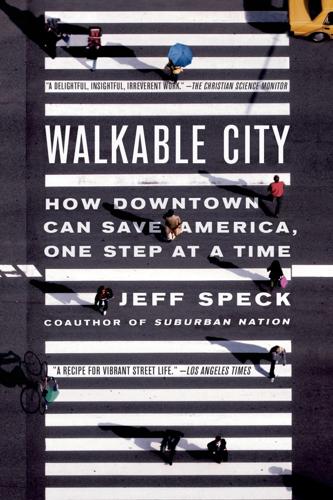
Walkable City: How Downtown Can Save America, One Step at a Time
by
Jeff Speck
Published 13 Nov 2012
Try it on a weekend and, if it works, expand the days. Don’t spend a penny on gorgeous car barricades, because if a pedestrian zone is going to be successful, it will thrive due to its location, demographics, and organization—not its streetscape. CONGESTION PRICING: TOO SMART TO BE EASY No chapter on cars and cities would be complete without a discussion of congestion pricing, a vastly underutilized tool that communities can use to protect themselves from the automotive hordes. We have already celebrated congestion, reluctantly, as a dominant factor in limiting people’s time on the road. Most cities need congestion to keep driving in check, because driving costs drivers so much less than it costs society.● But what if motorists were asked to pay something closer to the real cost of driving, so that they were once again allowed to make market-based choices about when to drive where?
…
When last polled, pros beat cons by 35 percent.38 And in the subsequent mayoral election, largely a referendum on the pricing scheme, Livingstone was reelected by a broad margin. London is not alone in its embrace of congestion pricing. São Paulo, Shanghai, Singapore, Stockholm, and Sydney39 have all introduced similar measures, with varying, but all generally positive, results. San Francisco is now working on its own scheme. Not beginning with the letter S like all the others, New York City was apparently at a distinct disadvantage when Mayor Michael Bloomberg hatched a congestion-pricing scheme on Earth Day 2007. His proposal would have raised about half a billion dollars annually, and was additionally slated to receive $354 million off the bat from the federal government.
…
Indeed, it is only because these systems pay for themselves that we can expect them to catch on. If there are no surprises in San Francisco, full-fledged congestion-priced parking is something that many cities will want to try. But, given its novelty and significant start-up cost, smaller cities may elect not to spend millions chasing perfection, when good enough is close at hand. A simple repricing of downtown spaces and parking lots may solve 90 percent of most cities’ parking problems. That said, since the start-up costs are easily bondable and the potential income so great, opting out of a full-fledged congestion-pricing regime could turn out to be a pound-foolish choice. A TALE OF TWO CITIES As if we weren’t convinced, Shoup has a final morality lesson to teach, and that is the story of the two Southern California shopping districts of Old Pasadena and Westwood Village.
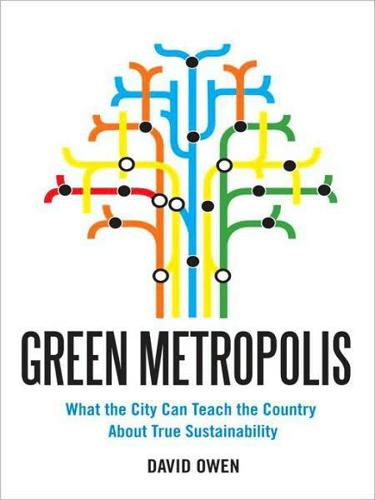
Green Metropolis: Why Living Smaller, Living Closer, and Driving Less Are Thekeys to Sustainability
by
David Owen
Published 16 Sep 2009
In 1999, Newman and Kenworthy, citing a 1995 study published in the International Journal of Urban and Regional Research, concluded that “there is no guarantee that congestion pricing will simultaneously improve congestion and sustainability.” They mentioned several ways in which congestion pricing can defy the expectations of its supporters, among them by causing motorists to “drive exactly as they always have if the congestion charge is covered by their firms (e.g., a majority of London’s peak-hour commuters have company cars and perks)” and by causing them to “drive more as they shift to ‘rat-running’ through suburban streets to avoid congestion-priced streets.”46 Advocates of congestion pricing usually argue that traffic jams waste gasoline, since cars stalled in traffic burn fuel when they’re not moving.j That’s true, but the energy waste and carbon output attributable to idling cars is vastly smaller than the energy waste and carbon output attributable to the overall transportation network, which generates waste both directly (by encouraging unnecessary driving) and indirectly (by encouraging forms of development that can be sustained only through huge new energy inputs and an ever-expanding web of energy-hungry infrastructure).
…
The only significant program elements that were altered were ones that drivers had identified as bothersome to themselves.44 IN NEW YORK CITY, THE DEBATE ABOUT TRAFFIC CON - gestion has mostly concerned congestion pricing, also known as road pricing, which is the practice of charging drivers road-use fees in certain areas during the hours of the day when car traffic is the heaviest. In 2007, Mayor Bloomberg proposed a congestion-pricing plan for New York City by which drivers would have been required to pay eight dollars to enter Manhattan below Eighty-sixth Street between six in the morning and six in the evening. The mayor’s office had estimated that this plan would raise $400 million in the first year—money that could be used to support public transit.
…
On Earth Day 2007, the city announced an ambitious two-decade environmental initiative, called PlaNYC, which includes dozens of far-reaching proposals, among them the planting of more than a million trees, the collection of tolls from most private and commercial vehicles using the most traffic-clogged parts of Manhattan during the busiest times of the day, the imposition of a surcharge on the bills of the city’s electrical customers, and other measures. 17 Actually implementing the plan has encountered the usual difficulties (shortly before Earth Day 2008, the state legislature killed the toll-collection scheme, which is known as “congestion pricing”), but one of the most striking features of the entire plan is how little recognition it gives to the numerous ways in which New York City’s environmental performance is already exemplary, even extraordinary, at least in comparison with the rest of the United States. Shortly before the plan was made public, the mayor’s office released a study showing that the city’s buildings are responsible for 79 percent of its greenhouse-gas emissions—an ominous statistic, the study suggested, since the national average for buildings is just 32 percent.
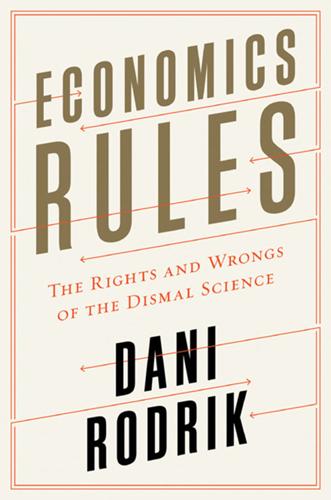
Economics Rules: The Rights and Wrongs of the Dismal Science
by
Dani Rodrik
Published 12 Oct 2015
He recommended that fares be increased at peak times and in sections with high traffic, and be lowered at other times and in other sections. This system of “congestion pricing” was nothing other than the application of economic supply-demand principles to public transport. Differential fares would give commuters with more-flexible hours the incentive to avoid peak travel times. They would allow passenger traffic to spread out over time, reducing the pressure on the system while enabling even larger total passenger flow. Vickrey would later recommend a similar system for roads and auto traffic as well. But many thought his ideas were crazy and unworkable. Singapore was the first country to put congestion pricing to a test. Beginning in 1975, Singaporean drivers were charged tolls for entering the central business district.
…
Acemoglu, Daron, 206 advertising, prisoners’ dilemma and, 14–15 Africa, Washington Consensus and, 162 agriculture: subsidies in, 149, 194 subsistence vs. modern, 75, 88 Airbus, 15 airline industry, deregulation of, 168 Akerlof, George, 68, 69n Algan, Yann, 79n, 200n Allen, Danielle, xiv American Economic Review (AER), 30–31 American Political Science Review (APSR), 30–31 Angrist, Joshua, 108 antelopes, 35n antipoverty programs, 3–4 cash grants vs. subsidies in, 4 antitrust law, 161 Argentina, 166 arguments, mathematics and, 35n Arrow, Kenneth, 31, 49–51 Ash, Michael, 77 Asia, economic growth and, 163–64, 166 asset bubbles, 152–58 asymmetric information, 68–69, 70, 71 Auctions: Theory and Practice (Klemperer), 36n “Auctions and Bidding: A Primer” (Milgrom), 36n auction theory, 36, 168 automobiles, effect of sales tax and demand on, 180–81 balanced budgets, 171 Bangladesh, 57–58, 123 Bank of England, 197 banks, banking, 1n, 2 computational models and, 38 credit rationing in, 64–65 globalization and, 165–66 Great Recession and, 152–59 insurance in, 155 regulation of, 155, 158–59 shadow sector in, 153 bargaining, 124–25, 143 Battle of Bretton Woods, The: John Maynard Keynes, Harry Dexter White, and the Making of a New World Order (Steil), 1n–2n bed nets, randomized testing and, 106, 204 behavioral economics, 69–71, 104–7, 202–4 Berlin, Isaiah, 175 Bernanke, Ben, 134–35 Bertrand competition, 68 Bhagwati, Jagdish, 182n–83n big data, 38–39, 40 Bloomberg, Michael, 4 Boeing, 15 Böhm-Bawerk, Eugen von, 119 Bordo, Michael D., 127n Borges, Jorge Luis, 43–44, 86 Boston University, 3 Boughton, James M., 1n Boulding, Kenneth, 11 bounded rationality, 203 Bowles, Samuel, 71n Brazil: antipoverty programs of, 4 globalization and, 166 Bretton Woods Conference (1944), 1–2 Britain, Great, property rights and, 98 bubbles, 152–58 business cycles, 125–37 balanced budgets and, 171 capital flow in, 127 classical economics and, 126–27, 129, 137 inflation in, 126–27, 133, 135, 137 new classical models and, 130–34, 136–37 butterfly effect, 39 California, University of: at Berkeley, 107, 136, 147 at Los Angeles, 139 Cameron, David, 109 capacity utilization rates, 130 capital, neoclassical distribution theory and, 122, 124 capital flow: in business cycles, 127 economic growth and, 17–18, 114, 164–67 globalization and, 164–67 growth diagnostics and, 90 speculation and, 2 capitalism, 118–24, 127, 144, 205, 207 carbon, emissions quotas vs. taxes in reduction of, 188–90, 191–92 Card, David, 57 Carlyle, Thomas, 118 carpooling, 192, 193–94 cartels, 95 Cartwright, Nancy, 20, 22n, 29 cash grants, 4, 55, 105–6 Cassidy, John, 157n Central Bank of India, 154 Chang, Ha-Joon, 11 chaos theory, butterfly effect and, 39 Chicago, University of, 131, 152 Chicago Board of Trade, 55 Chile, antipoverty programs and, 4 China, People’s Republic of, 156, 163, 164 cigarette industry, taxation and, 27–28 Clark, John Bates, 119 “Classical Gold Standard, The: Some Lessons for Today” (Bordo), 127n classical unemployment, 126 climate change, 188–90, 191–92 climate modeling, 38, 40 Cochrane, John, 131 coffee, 179, 185 Colander, David, 85 collective bargaining, 124–25, 143 Colombia, educational vouchers in, 24 colonialism, developmental economics and, 206–7 “Colonial Origins of Comparative Development, The” (Acemoglu, Robinson, and Johnson), 206–7 Columbia University, 2, 108 commitment, in game theory, 33 comparative advantage, 52–55, 58n, 59–60, 139, 170 compensation for risk models, 110 competition, critical assumptions in, 28–29 complementarities, 42 computable general equilibrium (CGE) models, 41 computational models, 38, 41 computers, model complexity and, 38 Comte, Auguste, 81 conditional cash transfer (CCT) programs, 4, 105–6 congestion pricing, 2–3 Constitution, U.S., 187 construction industry, Great Recession and, 156 consumers, consumption, 119, 129, 130, 132, 136, 167 cross-price elasticity in, 180–81 consumer’s utility, 119 contextual truths, 20, 174 contingency, 25, 145, 173–74, 185 contracts, 88, 98, 161, 205 coordination models, 16–17, 42, 200 corn futures, 55 corruption, 87, 89, 91 costs, behavioral economics and, 70 Cotterman, Nancy, xiv Cournot, Antoine-Augustin, 13n Cournot competition, 68 credibility, in game theory, 33 “Credible Worlds, Capacities and Mechanisms” (Sugden), 172n credit rating agencies, 155 credit rationing, 64–65 critical assumptions, 18, 26–29, 94–98, 150–51, 180, 183–84, 202 cross-price elasticity, 180–81 Cuba, 57 currency: appreciation of, 60, 167 depreciation of, 153 economic growth and, 163–64, 167 current account deficits, 153 Curry, Brendan, xv Dahl, Gordon B., 151n Darwin, Charles, 113 Davis, Donald, 108 day care, 71, 190–91 Debreu, Gerard, 49–51 debt, national, 153 decision trees, 89–90, 90 DeLong, Brad, 136 democracy, social sciences and, 205 deposit insurance, 155 depreciation, currency, 153 Depression, Great, 2, 128, 153 deregulation, 143, 155, 158–59, 162, 168 derivatives, 153, 155 deterrence, in game theory, 33 development economics, 75–76, 86–93, 90, 159–67, 169, 201, 202 colonial settlement and, 206–7 institutions and, 98, 161, 202, 205–7 reform fatigue and, 88 diagnostic analysis, 86–93, 90, 97, 110–11 Dijkgraaf, Robbert, xiv “Dirtying White: Why Does Benn Steil’s History of Bretton Woods Distort the Ideas of Harry Dexter White?”
…
“fox” approaches in, 175 ignorant vs. calculating peasant hypotheses in, 75 individual behavior in, 17, 33, 39, 42, 49, 101, 102, 131, 137, 181–82 marginalists and, 119–22 models in, see models outsider views in, 6 pluralism in, 196–208 points of consensus in, 147–52, 194–95 power and responsibility and, 174–75 predictability in, 6, 26–28, 38, 40–41, 85, 104, 105, 108, 115, 132, 133, 139–40, 157, 175, 184–85, 202 progressive modeling in, 63–72 psychology and sociology of, 167–74 self-interest in, 21, 104, 158, 186–88, 190 shocks in, 130–31, 132 social sciences and, xii–xiii, 45, 181–82, 202–7 strengths and weaknesses of, xi supply and demand in, 3, 13–14, 20, 99, 119, 122, 128–30, 136–37, 170 trade-offs in, 193–94 twenty commandments for, 213–15 values in, 186–96 see also markets; models Economics, Education and Unlearning: Economics Education at the University of Manchester (PCES), 197n education: antipoverty programs and, 4, 55, 105–6 field experiments and variable factors in, 24 markets and, 198 models in, 36–37, 173 efficient-markets hypothesis (EMH), 156–58 Einstein, Albert, 80, 81, 113, 179 El Salvador, 86, 92–93 Elster, Jon, 79n emissions quotas, 188–90, 191–92 empirical method, models and, xii, 7, 46, 65, 72–76, 77–78, 137, 173–74, 183, 199–206 employment: in business cycles, 125–37 labor productivity and, 123 minimum wages and, 17–18, 28n, 114, 115, 124, 143, 150, 151 social and cultural considerations in, 181 see also unemployment endogenous growth models, 88 England, comparative advantage principle and, 52–53 entrepreneurs: corruption and, 91 taxation and, 74 Ethiopia, 86, 123 Europe: Great Recession in, 153, 156 income inequality in, 125, 139 trade agreements between U.S. and, 41 European Common Market, 59 European Union (EU), 76 evolution, theory of, 113–14 exchange rates, 2, 100, 149 experiments: economic models compared with, 21–25 field types of, 23–24, 105–8, 173, 202–5 Explaining Social Behavior: More Nuts and Bolts for the Social Sciences (Elster), 79n external validity, 23–24, 112 fables, models and, 18–21 factor endowments theory, 139–40 Fama, Eugene, 157, 159 Fassin, Didier, xiv Federalists, 187 Federal Reserve, U.S., 134–35, 151n, 158 Feenstra, Rob, 141 field experiments, 23–24, 105–8, 173, 202–5 financial costs, 70 financial industry: globalization of, 164–67 in Great Recession, 152–59, 184 financial markets, deregulation and, 143, 155, 158–59, 162 “Fine Is a Price, A” (Gneezy and Rustichini), 71n fines, 71 First Fundamental Theorem of Welfare Economics, 47–51, 54 fiscal policies, 75–76, 87, 88, 147–48, 149, 160–61, 171 Fischer, Stanley, 165–66 forward causation, 115 Foundations of Economic Analysis (Samuelson), 125 Fourcade, Marion, 79n, 200n France, comparative advantage principle and, 59–60 Freakonomics (Levitt and Dubner), 7 Free to Choose, 49 free trade, 11, 54, 141, 169, 170, 182–83, 194 Friedman, Milton: on assumptions in modeling, 25–26 on cigarette taxes, 27–28 on invisible hand theorem, 49 on liquidity and Great Depression, 134 on model complexity, 37 fuel subsidies, 193 functional distribution of income, 121 Galbraith, John Kenneth, 184 Galileo Galilei, 29 Gambetta, Diego, 34 game theory, 5, 14–15, 33, 36, 61–62, 103–4, 133 simultaneous vs. sequential moves in, 68 garment industry, general-equilibrium effects in, 57–58 Gelman, Andrew, 115 general-equilibrium interactions, 41, 56–58, 69n, 91, 120 General Theory of Second Best, 58–61 Germany, comparative advantage principle and, 59–60 Gibbard, Allan, 20 Gilboa, Itzhak, 72, 73 Gini coefficient, 138 globalization, 139–41, 143, 164–67, 184 Gneezy, Uri, 71n Gold Standard, 2, 127 goods and services, economic models and, 12 Gordon, Roger, 151n Grand Theory of Employment, Interest, and Money, The (Keynes), 128 greenback era, 127n Greenspan, Alan, 158, 159 gross domestic product (GDP), 151n labor productivity and, 123 growth diagnostics, 86–93, 90, 97, 110–11 Haldane, Andrew, 197 Hamilton, Alexander, 187 Hanna, Rema, 107 Hanson, Gordon, 141 Harvard University, xi, 111, 136, 149, 197, 198 Hausmann, Ricardo, 111 health care: in antipoverty programs, 4, 105–7 models and, 5, 36–37, 105–7 Heckscher, Eli, 139 Herndon, Thomas, 77 Hicks, John, 128, 133 Hiebert, Stephanie, xv Hirschman, Albert O., 144–45, 195, 210n–11n housing bubble, 153–54, 156 human capital, 87, 88, 92 Humphrey, Thomas M., 13n Hunting Causes and Using Them: Approaches in Philosophy and Economics (Cartwright), 22n import quotas, 149 incentives, 7, 170, 172, 188–92 income: functional distribution of, 121 military service and, 108 personal distribution of, 121 income inequality, 117, 124–25, 138–44, 147–49 deregulation in, 143 factor endowments theory in, 139–40 Gini coefficient and, 138 globalization in, 139–41, 143 in manufacturing, 141 offshoring in, 141 skill premium in, 138–40, 142 skill upgrading in, 140, 141, 142 technological change in, 141–43 trade in, 139–40 India, 107, 154 Indonesia, 166 industrial organization, 201 industrial revolution, 115 industry: developing economies and policies on, 75–76, 87, 88 government intervention and, 34–35 inflation, 185 in business cycles, 126–27, 130–31, 133, 135, 137 public spending and, 114 infrastructure, 87, 91, 111, 163 Institute for Advanced Study (IAS), xii–xiii, xiv School of Social Science at, xii Institute for International Economics, 159 institutions: development economics and, 98, 161, 202, 205–7 labor productivity and, 123 insurance, banking and, 155 interest rates, 39, 64, 110, 129–30, 156, 161 internal validity, 23–24 International Bank for Reconstruction and Development, 2 see also World Bank international economics, 201–2 International Monetary Fund (IMF), 1n, 2 Washington Consensus and, 160, 165 Internet, big data and, 38 “Interview with Eugene Fama” (Cassidy), 157n investment: business cycles and, 129–30, 136 foreign markets and, 87, 89, 90, 92, 165–67 income inequality and, 141 savings and, 129–30, 165–67 Invisible Hand Theorem, 48–50, 51n, 182, 186 Israel, 103, 188 day care study in, 71, 190–91 Japan: city growth models and, 108 income inequality and, 139 Jenkins, Holman W., Jr., 135n Jevons, William Stanley, 119 Kahneman, Daniel, 203 Kenya, 106–7 Keynes, John Maynard, 1–2, 31, 46, 165 on business cycles, 127–37 on liquidity traps, 130 see also models, Keynesian types of Klemperer, Paul, 36n Klinger, Bailey, 111n Korea, South, 163, 164, 166 Kremer, Michael, 106–7 Krugman, Paul, 136, 148 Kuhn, Thomas, 64n Kupers, Roland, 85 Kydland, Finn E., 101n labor markets, 41, 52, 56, 57, 92, 102, 108, 111, 119, 163 labor productivity, 123–24, 141 labor theory of value, 117–19 Lancaster, Kelvin, 59 Latin America, Washington Consensus and, 159–63, 166 Leamer, Edward, 139 learning, rule-based vs. case-based forms of, 72 Leijonhufvud, Axel, 9–10 Lepenies, Philipp H., 211n leverage, 154 Levitt, Steven, 7 Levy, Santiago, 3–4, 105–6 Lewis, W. Arthur, 32–33 “Life among the Econ” (Leijonhufvud), 9–10 Lincoln, Abraham, 52 Lipsey, Richard, 59 liquidity, 134–35, 155, 185 liquidity traps, 130 locational advantages, 108 London, England, congestion pricing and, 3 Lucas, Robert, 130, 131–32, 134–36 “Machiavelli’s Mistake: Why Good Laws Are No Substitute for Good Citizens” (Bowles), 71n macroeconomics, 39–40, 87, 102, 107, 143, 157n, 181 business cycles and, 125–37 capital flow and, 165–66 classical questions of, 101 demand-side view of, 128–30, 136–37 globalization and, 165–66 Madison, James, 187 Mäki, Uskali, 22n malaria, randomized testing and, 106, 204 Malthus, Thomas, 118 Manchester University, 197 Mankiw, Greg, 149, 150, 171n, 197 manufacturing: economic growth and, 163–64 exchange rate and, 100, 163 income inequality and, 141 marginal costs, 121, 122 marginalist economics, 119–22 marginal productivity, 120–21, 122–25 marginal utility, 121, 122 Mariel boatlift (1980), 57 market design models, 5 “Market for ‘Lemons’, The” (Akerlof), 69n market fundamentalism, 160, 178 markets: asymmetric information in, 68–69, 70, 71 behavioral economics and, 69–71, 104–7, 202–4 economic models and, see models economics courses and, 198 economists’ bias toward, 169–71, 182–83 efficiency in, xiii, 14, 21, 34, 48, 50, 51, 67, 98, 125, 147, 148, 150, 156–58, 161, 165, 170, 192–95, 196 general-equilibrium interactions in, 41, 56–58, 69n, 91, 120 in Great Recession, 156–59 imperfectly competitive types of, 67–69, 70, 136, 150, 162 incentives in, 7, 170, 172, 188–92 institutions and, 98, 161, 202 likely outcomes in, 17–18 multiple equilibria in, 16–17 perfectly competitive types of, 21, 27, 28, 47, 69n, 71, 122, 180 prisoners’ dilemma in, 14–15, 20, 21, 61–62, 187, 200 self-interest in, 21, 104, 158, 186–88, 190 social cooperation in, 195–96 supply and demand in, 13–14, 20, 99, 119, 122, 128–30, 136–37, 170 values in, 186–96 Washington Consensus and, 159–67, 169 Marshall, Alfred, 13n, 32, 119 “Marshallian Cross Diagrams and Their Uses before Alfred Marshall: The Origins of Supply and Demand Geometry” (Humphrey), 13n Marx, Groucho, 26 Marx, Karl, xi, 31, 116, 118 Massachusetts, University of (Amherst), 77 Massachusetts Institute of Technology (MIT), 107, 108, 165, 206 mathematical economics, 35 mathematical optimization, 30, 101, 202–3 mathematics: economic models and, 29–37, 47 social sciences and, 33–34 Maxwell’s equations, 66n Meade, James, 58 methodological individualism, 181 Mexico: antipoverty programs in, 3–4, 105–6 globalization and, 141, 166 microeconomics, 125–26, 131 microfounded models, 101 Miguel, Ted, 106–7 Milan, Italy, congestion pricing and, 3 Milgrom, Paul, 36n minimum wages, employment and, 17–18, 28n, 114, 115, 124, 143, 150, 151 Minnesota, University of, 131 Mishel, Lawrence, 124n models: authority and criticism of, 76–80 big data and, 38–39, 40 causal factors and, 40–41, 85–86, 99–100, 114–15, 179, 184, 200, 201, 204 coherent argument and clarity in, 80–81 common sense in, 11 comparative advantage principle and, 52–55, 58n, 59–60, 139, 170 compensation for risk and, 110 computers and, 38, 41 contextual truth in, 20, 174 contingency and, 25, 145, 173–74, 185 coordination and, 16–17, 42, 200 critical assumptions in, 18, 26–29, 94–98, 150–51, 180, 183–84, 202 criticisms of, 10–11, 178, 179–85 decision trees and, 89–90, 90 diagnostic analysis and, 86–93, 90, 97, 110–11 direct implications and, 100–109 dual economy forms of, 88 efficient-markets hypothesis and, 156–58 empirical method and, xii, 7, 46, 65, 72–76, 77–78, 137, 173–74, 183, 199–206 endogenous growth types of, 88 experiments compared with, 21–25 fables compared with, 18–21 field experiments and, 23–24, 105–8, 173, 202–5 general-equilibrium interactions and, 41, 56–58, 69n, 91, 120 goods and services and, 12 Great Recession and, 155–59 horizontal vs. vertical development and, 64n, 67, 71 hypotheses and, 46, 47–56 imperfectly competitive markets and, 67–69, 70, 136, 150, 162 incidental implications and, 109–11 institutions and, 12, 98, 202 intuition and, 46, 56–63 Keynesian types of, 40, 88, 101, 102, 127–30, 131, 133–34, 136–37 knowledge and, 46, 47, 63–72 main elements of, 31 mathematics and, 29–37, 47 neoclassical types of, 40, 88, 90–91, 121, 122 new classical approach to, 130–34, 136–37 parables and, 20 partial-equilibrium analysis and, 56, 58, 91 perfectly competitive markets and, 21, 27, 28, 47, 69n, 71, 122, 180 predictability and, 26–28, 38, 40–41, 85, 104, 105, 108, 115, 132, 133, 139–40, 184–85, 202 principle-agent types of, 155 questions and, 114–16 rationality postulate and, 202–3 real world application of, 171–72 rules of formulation in, 199–202 scale economy vs. local advantage in, 108 scientific advances by progressive formulations of, 63–72 scientific character of, 45–81 second-best theory and, 58–61, 163–64, 166 selection of, 83–112, 136–37, 178, 183–84, 208 simplicity and specificity of, 11, 179–80, 210 simplicity vs. complexity of, 37–44 social reality of, 65–67, 179 static vs. dynamic types of, 68 strategic interactions and, 61–62, 63 of supply and demand, 3, 13–14, 20, 99, 119, 122, 128–30, 136–37 theories and, 113–45 time-inconsistent preferences in, 62–63 tipping points arising from, 42 in trade agreements, 41 unrealistic assumptions in, 25–29, 180–81 validity of, 23–24, 66–67, 112 variety of, 11, 12–18, 26, 68, 72, 73, 114, 130, 198, 202, 208, 210 verbal vs. mathematical types of, 34 verification in selection of, 93–112 see also economics; macroeconomics; markets “Models Are Experiments, Experiments are Models” (Mäki), 22n monetary policies, 87 monopolies, 161 in imperfectly competitive markets, 67–68 in perfectly competitive markets, 122 price controls and, 28, 94–97, 150 Montesquieu, Charles-Louis de Secondat, Baron de La Brède et de, 196 mortality rates, 206 mortgage-backed securities, 155 mortgage finance, 39, 155 mosquito nets, randomized testing of, 106, 204 “Mr.

Street Smart: The Rise of Cities and the Fall of Cars
by
Samuel I. Schwartz
Published 17 Aug 2015
(Full disclosure: I had written dozens of similar papers for candidates and elected officials, but this was the first time I had been paid for it!) A major element was congestion pricing. I entered the candidate’s office on Lexington Avenue and was led to a desk in the middle of a very busy floor where I first met Michael Bloomberg. I liked him instantly. He was no-nonsense and a numbers person—my kinda guy. He had read it and peppered me about congestion pricing. He didn’t like it, or so it seemed. It was unfair, unworkable, and likely would hurt business. I countered and parried and thought I gained some ground but it was hard to tell. His first term came and went with nary a mention of congestion pricing. In 2003, however, things changed.
…
While the New York City Council held a largely ceremonial vote in favor, the state legislature, which needed to pass legislation enabling the city to set tolls, never even held a vote. Congestion pricing, however, is about as hard to kill as Rasputin. As of this writing, I am advocating for another congestion pricing plan, this one known as Move NY, and it may even be on the way to being implemented as you read this. Or not—I’m used to disappointment on this subject. The reason is that when you give something valuable away for free, demand is essentially infinite. As a result, urban traffic congestion just keeps getting worse. I may be a little unhinged on the subject of congestion pricing, but the really insane idea, the one we keep trying over and over again with exactly the same crappy results, is fixing congestion by building more roads.
…
So long as they have no price signals that tell them how, and how much, they would benefit by commuting at different times, drivers will inevitably commute inefficiently. The airlines have figured this out; that’s why they charge wildly different prices for seats depending on when they are reserved. This is what congestion pricing is all about. I first heard the term congestion pricing at one of the monthly Midtown Circulation meetings I held in the late 1970s, when I was an assistant commissioner at the New York City Department of Transportation. To be fair, they weren’t my favorite way to spend time. In fact, they were about as productive as herding cats through a fish cannery, mostly because the attendees were intrinsically at cross-purposes—they included community members and representatives of business groups, pro-driver associations like AAA, and pro-bike organizations like Transportation Alternatives.
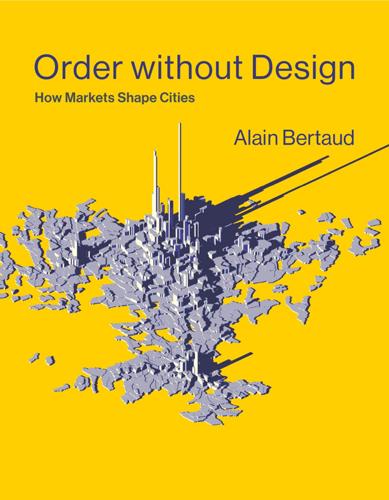
Order Without Design: How Markets Shape Cities
by
Alain Bertaud
Published 9 Nov 2018
In addition, measures have been taken to limit the number of cars on the island by auctioning periodically the right to buy new cars. The effectiveness of Singapore’s congestion pricing policy is demonstrated by figure 5.19. Between 2005 and 2014, the average speed at peak hours has only varied between 61 and 64 km/h for expressways and between 27 and 29 km/h in the business district and arterial roads. During the same period, Singapore’s population increased by 31 percent! Figure 5.19 Evolution of vehicular speeds at peak hours, Singapore. Source: Data are from “Singapore Land Transport Statistics, 2005–2014,” Land Transport Authority, Singapore, 2015. The Singapore congestion pricing system is the closest in the world to the theoretical model I suggested above: charging a rent for roads the way one is charged for a hotel room (ideally, for a room rented by the hour of use).
…
See Bus rapid transit Brueckner, Jan, 18, 335–336, 339 Bruegmann, Robert, 116 Buenos Aires (Argentina), 156–158, 158f, 389n12 Building permits, 4–7 Building the Skyline (Barr, Jason), 318 Bulk regulations, 393n8 Bus rapid transit (BRT), 274–275. See also Transit congestion pricing and, 185, 212 dwell time and, 186, 192, 195 headways for, 191–197, 192f, 194f, 196f for mobility, 191–197, 192f, 194f, 196f urban planning for, 155, 160–162, 162f Cairncross, Frances, 150–152 Canada, 375 Carbon Dioxide. See CO2 equivalent Cars. See Transit; Transport Çatalhöyük, 22 Central business districts (CBDs), 384n12 congestion pricing in, 217 data for, 42–45, 44f–45f, 195–196, 196f density and, 105–108, 106f–107f environment and, 80–81, 80f floor area consumption in, 52–53 for labor markets, 96–97 for municipal governments, 315, 316f in Paris, 71–73, 72f as residential areas, 318, 327–328, 328f transit in, 311 in urban planning, 36, 36f, 37–42, 38f–39f Cerdà, Ildefons, 66–68 Cervero, Robert, 168 Chambres de bonnes (maids’ rooms), 385n20 Cheshire, Paul, 18, 306, 337 Chicago, 335 Chile, 261 China.
…
If the road users’ demand is higher than the road capacity, in the absence of gatekeepers or price adjustments, all users will have to reduce speed until all demand has been satisfied, even if this demand results into total gridlock! I discuss below the indirect means currently used to decrease the number of cars entering an urban network; except for adjustable congestion pricing as used in Singapore, most methods are often clumsy and ineffective. So far, we have only looked at the links between vehicle density, speed, and lane capacity for cars, which could be taxis or private cars. Let us now compare these relations for various types of moving vehicles. Table 5.5 shows the street area required per passenger at different speeds for motorcycles, ordinary cars, short cars (“smart cars”), and urban buses using equation 5.4.

The Wisdom of Crowds
by
James Surowiecki
Published 1 Jan 2004
Scholz and Mark Lubell, “Adaptive Political Attitudes: Duty, Trust, and Fear as Monitors of Tax Policy,” American Journal of Political Science 42 (1998): 903–20; and Scholz and Lubell, “Trust and Taxpaying: Testing the Heuristic Approach to Collective Action,” American Journal of Political Science 42 (1998): 398–417. Part II 7. Traffic: What We Have Here Is a Failure to Coordinate An excellent survey of congestion pricing is C. Robin Lindsey and Erik T. Verhoef, “Traffic Congestion and Congestion Pricing,” Tinbergen Institute discussion paper TI2000–101/3 (2000). See also Katushiko Nakamura and Kara Maria Kockelman, “Congestion Pricing and Roadspace Rationing: An Application to the San Francisco Bay Bridge Corridor,” Transportation Research Part A: Policy and Practice 36 (2002): 403–17. There is a good discussion of Singapore’s traffic system in Dan Baum, “The Ultimate Jam Session,” Wired 9.11 (November 2001), http://www.wired.com/wired/archive/9.11/singapore_pr.html.
…
Livingstone had to fight off massive lobbying efforts in opposition to his plan for London. In the United States, meanwhile, congestion pricing has always been a nonstarter. Americans don’t like paying highway and bridge tolls, but they hate the idea of having to pay more money to drive during rush hour. Most people feel as if they have no choice about when or how they commute, and the thought of the wealthy paying to zip along empty roads while everyone else takes the long way around grates. As a result, we’d rather suffer in traffic than allow some to pay for freedom. The authors of a study of a failed attempt to introduce congestion pricing on San Francisco’s Bay Bridge, for instance, concluded that both voters and politicians need to be convinced there are literally no other alternatives before they’ll accept a Vickrey scheme.
…
But when it comes to driving, Americans seem to prefer it when there’s no price—at least in money terms—at all. It’s not surprising, then, that the one place in the world that’s made an art out of congestion pricing is the antithesis of America in cultural terms, namely Singapore. Blessed with not having to worry about angry drivers’ groups or disgruntled voters, Singapore’s government put congestion pricing in place for the first time in 1975. The initial version of the plan looked a lot like London’s more recent scheme: you had to pay a toll if you wanted to get into the country’s central business district (CBD) during rush hour.
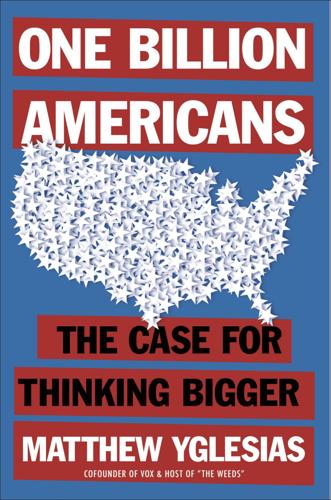
One Billion Americans: The Case for Thinking Bigger
by
Matthew Yglesias
Published 14 Sep 2020
Key to getting it done, however, is making sure that improved management of America’s traffic is understood as a real fix to a problem that bedevils the country rather than another front in culture war politics. Congestion and transit Unfortunately, congestion pricing is often framed as a revenue raiser for investment in mass transit. This is mistaken on two grounds, one technical and one political. The technical flaw in the argument is that in the American context, implementing the congestion price actually generates substantial improvements in transit without any need for additional funds. The political flaw is that congestion pricing is unfamiliar and controversial, and framing it as a zero-sum financial transfer from the driving majority to the transit-riding minority sets it up for failure.
…
The fees charged vary both by time of day, vehicle type, and by where exactly in the city the car is. Today broadly similar congestion-pricing systems are in place in London, Milan, and Oslo, and after an incredible amount of back-and-forth, it looks like New York City will move in this direction too. In all cases, the introduction of congestion fees has been extremely controversial—people don’t like taxes and tend to be mildly resistant to any kind of unfamiliar policy idea—but they’ve ultimately stuck around even as partisan control of the government has switched. And that’s because the logic of congestion pricing is extremely compelling. Once a year as a marketing stunt, Ben & Jerry’s stages a free ice-cream cone day when they literally give away free ice-cream cones at their stores.
…
If congestion charges induced more people to ride DART, then DART could afford to run trains more frequently, which would greatly improve the quality of DART service without any incremental investment of funds. The point here is not to rail against the idea of increased transit funding, but simply to make the point that turning the debate over congestion pricing into a debate over transit funding is unnecessary—congestion pricing is a big win for transit riders regardless of what you do with the money. But outside of New York, transit riders are not a large enough constituency to win a political argument. The money should go to whatever the voters want—better parks, lower sales taxes, more roads, more police officers—with transit advocates secure that more riders is its own reward, and will in turn build a constituency for more transit investments.
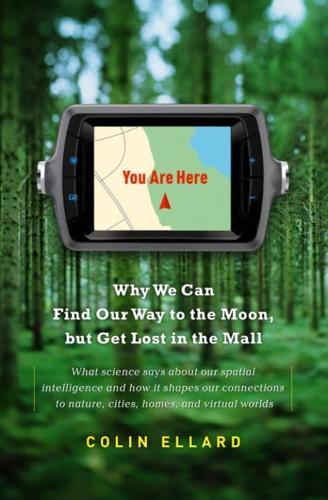
You Are Here: Why We Can Find Our Way to the Moon, but Get Lost in the Mall
by
Colin Ellard
Published 6 Jul 2009
One of the most remarkable demonstrations of how difficult it can be to convince human beings of the laws of geometry and physics has come from the major battles that have been waged over congestion pricing for urban roadways. In congestion pricing schemes, drivers who enter certain parts of a traffic-choked city during peak hours are required to pay a stiff surcharge. London, England, so far the largest city to have adopted congestion pricing, charges £8 to vehicles entering the city during peak times. When it was introduced, the scheme was enormously controversial, with central businesses claiming that they would suffer devastating losses and commuters arguing that in spite of a comprehensive mass transit system, they would have great difficulty getting to work on time.
…
Driving a car is more active than sitting on a bus, so time can seem to pass more quickly, hence contracting perceived distances. People have many other reasons for preferring private car travel over public transit. In New York City, Mayor Michael Bloomberg has been an ardent advocate of congestion pricing, but has had to face enormous resistance to an idea that not only makes sense but is supported by the London experience. Results from an extensive telephone survey conducted on behalf of the Partnership for New York City, a group that supports congestion pricing, showed that many people chose not to use mass transit because they believed that it would increase their travel time (which is almost certainly not true), they preferred to be in control of their own movements, and they wished to avoid contact with other people.
…
The interesting space syntax of the city of Nicosia is described by Bill Hillier and Laura Vaughan in the article “The City as One Thing,” Progress in Planning, 67, no. 3 (2007), 205-230. 19. An excellent summary of the London congestion pricing experience, its effects, and implications for similar schemes in other cities has been published by Todd Litman of the Victoria Transport Policy Institute of Canada, www.vtpi.org/london.pdf. An analysis of London’s experience and its implications for the proposal of a similar scheme for Manhattan is reported by the New York Academy of Sciences in an e-briefing written by Christine Van Lenten entitled “Congestion Pricing for New York? Lessons from London” (May 10, 2007), available at www.nyas.org/ebrief/miniEB.asp?
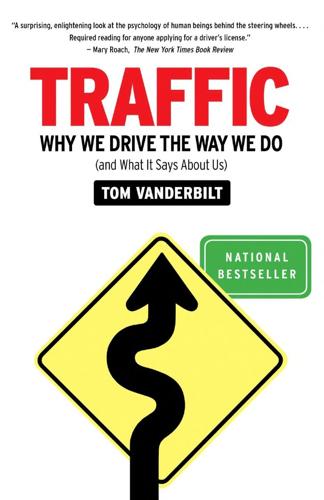
Traffic: Why We Drive the Way We Do (And What It Says About Us)
by
Tom Vanderbilt
Published 28 Jul 2008
This was deemed, from a traffic point of view, impossible. As Malcolm Murray-Clark, the director of London’s congestion-pricing program, told me over tea in his office, congestion pricing changed all that. By removing the “background levels” of traffic from London, as he put it, planners had the wiggle room to remove the Trafalgar road without catastrophic consequences. “Eighteen percent of the traffic through Trafalgar Square did not have a destination in central London,” he said. “It was just a through trip. Those were the first to go, if you like.” Congestion pricing is really just another spin on making the system optimal, or, to put it another way, saving people from their own instincts: How do you persuade everyone not to go to the same place at the same time?
…
India, in case you were wondering, was roughly halfway down the list, just as it is on the corruption index. Lest you think I am singling out India, I might add that the United States embassy in London, as of 2007, owed the highest amount (ahead of even corruption-plagued Nigeria) of unpaid traffic congestion-pricing fees to the city of London. The United States, which claims that its diplomats are exempt from the congestion-pricing “tax,” is not one of the ten least corrupt countries (it was ranked twentieth in 2007). (The least-corrupt country, Finland, whose diplomats are also exempt from taxes, pays the charge.) In traffic, laws are only as good as the norms regarding them.
…
It may be a good deal for society—a loss leader, like Costco’s cheap televisions—but it’s such a good deal that everyone does it. Recently, however, as we have been running out of money and space for new roads, the thinking has turned from “How can we get more people on the roads?” to “How can we get fewer?” The answer, of course, is congestion pricing. As an idea, it’s hardly new. The idea of taxing people for the “externalities,” like congestion, that they create goes all the way back to economists like Arthur Pigou, who talked about the problems road users create for other road users in his 1920 book, The Economics of Welfare. Later, the Nobel Prize–winning economist William Vickrey led a long, lonely crusade to get people to accept the idea that urban roads are a scarce resource and should be priced accordingly.
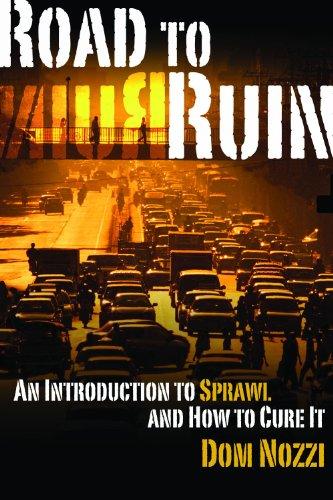
Road to ruin: an introduction to sprawl and how to cure it
by
Dom Nozzi
Published 15 Dec 2003
At the same time, the higher trip costs due to congestion will discourage residents and businesses from locating in dispersed, low-density areas. Furthermore, planned congestion is politically easier to implement than the preferred approach of congestion pricing. And with the improved quality of alternatives to driving alone brought about by planned congestion, it becomes politically easier to implement congestion pricing—the most efficient congestion management tactic.39 Congestion pricing imposes a fee for using congested roads during rush hour periods. The goal is to shift drivers to alternative times, alternative routes, or to noncar travel, and the fee varies depending on the time of travel and the location, which discourages low-value single-occupant travel rather than all travel.
…
Mankiw says “this may be the closest thing to a free lunch that economics has to offer.”36 There is statistical support, however, showing that because parking fees can take into account congested times of day or congested facilities, using them reduces the number of miles people drive much more effectively than raising gasoline taxes, which are unable to take such congestion into account.37 PLANNED CONGESTION AND CONGESTION PRICING “Most people will not walk or bicycle or take the bus unless driving is too expensive or inconvenient or traffic is too frustrating,” a Florida transportation study notes, and in Perth, Australia, “17 percent of all bus riders would shift to car use if road congestion declined.”38 Among the benefits of “planned congestion” (that is, deliberately “doing nothing” in the face of congestion) we can count the money saved by not increasing road capacity, with which we can improve the transportation system for bicycling, walking, and public transit.
…
In addition, the fee means that those who do not drive (or who do not drive during congested times) avoid subsidizing those who do, through such revenues as gas taxes or property taxes.43 Looked at another way, if we choose to drive less, we typically receive only a tiny portion of the savings that result, the few pennies from reducing our per-trip fuel use.44 Avoiding a $3 payment for not driving during rush hour is probably more meaningful to us as individuals than the benefit that the entire community shares from our choice. A number of economists hold that urban traffic congestion is nearly impossible to solve without some form of congestion pricing. Yet advocating the use of this tactic, the most efficient and effective way to discourage low-value car trips, is political suicide in America, and unsurprisingly, the tactic is not in use anywhere in the country.45 HIGH-OCCUPANCY TOLL AND VEHICLE LANES Reserving traffic lanes for cars occupied by more than one person reduces driver-only car trips when those lanes replace existing “general purpose” travel lanes.
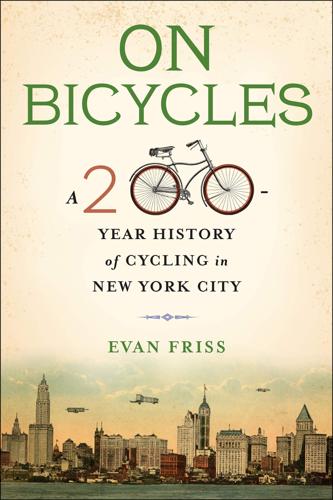
On Bicycles: A 200-Year History of Cycling in New York City
by
Evan Friss
Published 6 May 2019
“Residents Face Off Over Brooklyn Bike Lane,” New York Times, March 10, 2011. Many critics of congestion pricing labeled it a regressive tax that would hurt working-class New Yorkers, but others emphasized the way the plan would force people to change their behavior. One editorial, for example, went so far as to suggest that congestion pricing would “curtail civil liberties.” A. K. Gupta, “Congestion Pricing: Don’t Trust Mayor Mike,” The Indypendent, July 24, 2007, https://indypendent.org/2007/07/congestion-pricing-dont-trust-mayor-mike/. 51. “Brooklyn Bike Lane is Scuttled (No, Not That One),” City Room: Blogging from the Five Boroughs (New York Times), April 12, 2011, https://cityroom.blogs.nytimes.com/2011/04/12/brooklyn-bike-lane-is-scuttled-no-not-that-one/?
…
In the years after, New Yorkers complained that banning trans fats made for less tasty french fries—as did requiring restaurants to publish the disturbing number of calories therein. Those measures would soon be adopted nationally, but at the time they were tinged with controversy. Be it bike paths and lanes, congestion pricing, smoking, or trans fats, critics said the government was going too far in telling its citizens how they ought to live.50 Yet Bloomberg was hardly afraid to back policies that were new to the United States and unpopular with certain, even vocal, local constituencies. New kinds of street designs were no different.
…
But Moses also served as a useful reminder. As Sadik-Khan historicized, reclaiming portions of roads once dedicated to cars was “Jane Jacobs’s revenge on Robert Moses.” In her own time, she faced no single Moses-like adversary, but she and Bloomberg did have plenty of foes, and sometimes the foes won. Public protest killed congestion pricing, a New York City Olympic bid, a ban on giant sodas, and a bike lane on Bedford Avenue.70 But opposition could not rewind Bloomberg and Sadik-Khan’s agenda. More people biked to work in New York than in any other American city. The rate of growth, especially from 2010 onward, was much higher than that experienced in widely recognized bike-friendly cities like Portland, Oregon, Minneapolis, and Seattle.
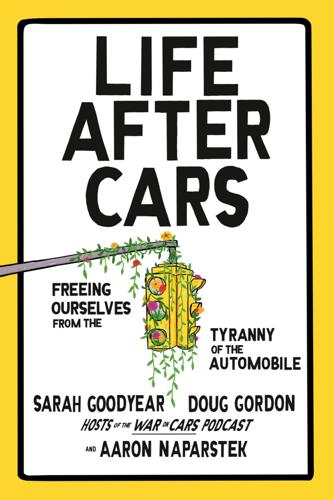
Life After Cars: Freeing Ourselves From the Tyranny of the Automobile
by
Sarah Goodyear
,
Doug Gordon
and
Aaron Naparstek
Published 21 Oct 2025
Another, from 1907, is headlined “War on Motorists” and reports that “the opening gun in the fight between Glen Echo [Maryland] and the automobilists of Washington” was a move to reduce the speed limit to six miles per hour. Eventually, references to a “war on cars” would change their meaning. In 2002, The Economist published a story titled “The War Against the Car” and asked if the then-mayor of London, Ken Livingstone, was purposely making traffic worse so that he could enact congestion pricing the next year. No longer did the stories about a “war on cars” describe put-upon small-town folk fighting back against the scourge of urban joyriders. Instead, the phrase came to encapsulate the way drivers feel downright attacked by any policy or design solution that gives space to pedestrians, cyclists, and transit users—or otherwise addresses the many negative externalities of cars.
…
In this fevered narrative, the relatively anodyne concept of being able to access services and amenities within a fifteen-minute walk or bike ride in your own neighborhood was painted as the work of a totalitarian state that wanted, in the words of British right-wing media personality Katie Hopkins, to create a world in which “you will have only 15 minutes of freedom.” These addled conspiracy theories and juvenile displays of machismo might seem merely absurd. But they have real-world consequences. Some of them are political, like New York Governor Kathy Hochul’s last-minute decision to pause congestion pricing in New York City in what was apparently an effort to placate wealthy suburban voters and persuade them to vote for Democratic candidates in the 2024 election. (Autocentrism is one of the few remaining bastions of bipartisanship.) And sometimes, the consequences are fatal. In August of 2017, a young woman named Heather Heyer was killed in Charlottesville, Virginia, by the driver of a Dodge Challenger who used his vehicle to plow into a crowd of protesters who had assembled to counter the infamous “Unite the Right” rally.
…
Maybe that’s why so many Americans like vacationing in Europe (or in the Disney bubble of simulated Euro-style walkable streets). Pretty much anywhere you go in Europe these days, you will find cities that have limited cars and increased space for human beings. Oslo, Madrid, Paris, London—these are the cities that make international headlines with their congestion pricing initiatives, bike lane networks, and freeway removals. But in dozens of smaller cities, from Bilbao to Malmö to Toulouse to Ljubljana, city officials are pedestrianizing downtowns, limiting automobile access in residential districts by using simple infrastructure like retractable bollards—simple cylindrical traffic barriers that go up and down to admit permit holders, delivery drivers, and emergency vehicles—and creating new parks in industrial areas or where roads used to be.
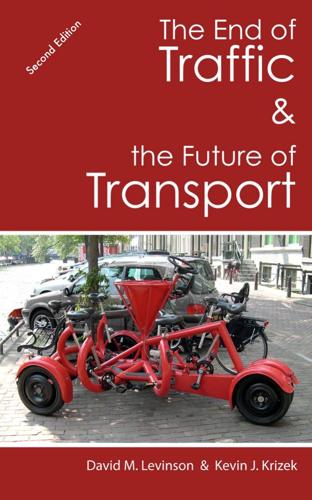
The End of Traffic and the Future of Transport: Second Edition
by
David Levinson
and
Kevin Krizek
Published 17 Aug 2015
XLV (June 2007), pp. 373–399 311 EVs accelerate faster, so can lead to slightly reduced headways exiting traffic signals. 312 The common term is congestion pricing. Versions have been successfully implemented in cities including London, Stockholm, and Singapore among others. Almost all economists like congestion pricing. For further information, see: Lindsey, Robin (2006) Do Economists Reach A Conclusion on Road Pricing? The Intellectual History of an Idea. Econ Journal Watch 3(2) pp. 292-379 313 King, D., Manville, M., & Shoup, D. (2007). The political calculus of congestion pricing. Transport Policy, 14(2), 111-123. 314 Figure 13.1, Sources various. Special thanks to David Ungemah and Mark Burris. 315 The end result might be parallel HOT lane networks and conventionally priced networks that have some crowding, but off-peak discounts. 316 The MnPass system in Minnesota, among others, is a good example of such. 317 Non-recurring congestion would still be an issues, owing to crashes and other incidents, but not the daily recurring congestion because of excess demand for the available capacity. 318 Adapted from Levinson (2012) Perils of Privatization and Pricing as Proposed - Towards a Public Utility Model of Roads http://transportationist.org/2012/03/21/perils_of_privatization_and_pr/ 319 Transport agencies have considered all of these, but implemented them weakly.
…
—Paul Trombino, the director of the Iowa Department of Transportation. 275 To minimize physical waste, the slogan "Reduce, Reuse, Recycle" is ingrained into kindergarten children in the US; it emphasizes reduction of needless waste and consumption. A starting point for how to approach transport facilities—mainly the space between buildings in the form of roads—modifies this mantra to Reduce, Reuse, Bicycle. Reduce Reducing overall travel demand helps and congestion pricing is undoubtedly the most effective strategy in the near term; we tackle pricing and cost issues in the next chapter. We first motivate and prescribe tactics for more efficiently employing existing transport supply. A popular gripe is that congestion stems from scarce right-of-way (scarce in that it is limited, and finite, and at times fully used given the applied technologies for its use).
…
That surplus can be returned to the general public (for instance, through lowering some other tax or providing an annual road dividend — make the rebate as progressive as you like, it doesn't matter from a transport perspective). Surprising as it may seem, society as a whole would be better off. This requires political will and public acceptance for people to exchange money for time. To date, the public is skeptical when they are unfamiliar with road pricing, but supportive after seeing it in action. Returning congestion pricing revenue back to the neighborhoods where it was generated may help.313 Phasing pricing in one Electric Vehicle at a time seems an obvious strategy. Networks of HOT Lanes. The onset of High Occupancy/Toll (HOT) or express lanes is already happening across the US (Figure 13.1314). Whereas road pricing requires everyone to pay for use of the facility, HOT lanes allow users to opt into paying a toll in exchange for assurance of uncongested travel (or travel for free or a discount if they are in a carpool).
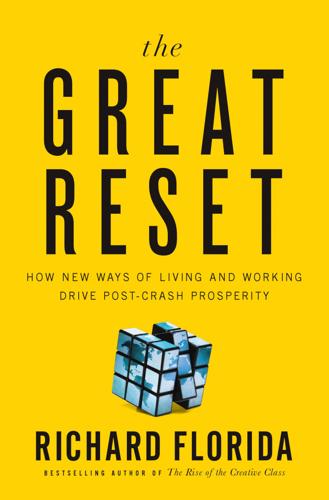
The Great Reset: How the Post-Crash Economy Will Change the Way We Live and Work
by
Richard Florida
Published 22 Apr 2010
We pay for everything else: we pay to take the subway, ride the bus, or take the train, we pay to drive through the Lincoln and Holland Tunnels or over the George Washington Bridge. Why should the roads be essentially free? If we want to make traffic better, we have little choice other than to make people pay for the roads they drive on. Economists call it congestion pricing. It’s been introduced in London and in Stockholm, where it’s cut down on traffic and congestion significantly. “Congestion pricing is basic economics,” writes David Owen. “The idea is that if you have a sporadically scarce commodity, such as space in automobile lanes, you can eliminate distribution bottlenecks by adjusting prices in counterpoint to variations in demand.
…
Today, we need to begin making smarter use of both our urban spaces and the surrounding suburban rings—creating comfortable, affordable living space for more people while at the same time providing an improved quality of life. That is going to entail liberal zoning and building codes within cities, to allow more residential development and more mixed-use development in suburbs and cities alike; the in-filling of suburban cores near rail links; new investment in mass transportation; and congestion pricing for travel on our roads. Not everyone wants to live in a city center, and the suburbs are not about to disappear. But at the same time, we cannot facilitate economic recovery by continuing our outward expansion, gobbling up more and more land to build more housing developments. After all, that’s largely what brought us to our current crisis.
…
That helps to smooth fluctuations in reservation rates, enabling the hotels to make better use of their existing rooms and to increase total revenues without building new capacity, much of which would end up being empty except during periods of peak travel.”14 There’s no reason why we couldn’t apply the same principles to making automobile traffic more manageable and efficient. Owen supports the basic idea of congestion pricing, while pointing out the potential environmental drawbacks. He worries that drivers will detour around the higher-priced congestion and actually end up driving more. “There’s nothing green about fighting congestion if, by distributing traffic more efficiently, it results in an overall increase in traffic volume and extra miles driven by vehicles avoiding the fee areas.”
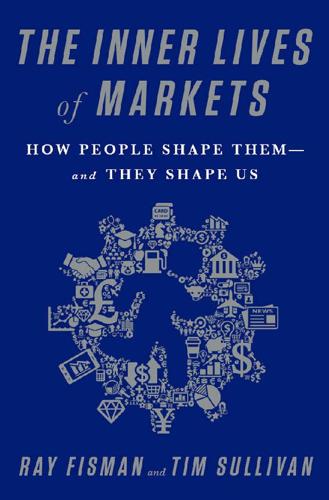
The Inner Lives of Markets: How People Shape Them—And They Shape Us
by
Tim Sullivan
Published 6 Jun 2016
He wondered why his colleagues hadn’t reached similar conclusions.5 Economists often model the world as a fully optimized place, and Vickrey was perhaps irked that his fellow economists weren’t practicing in their private lives what they preached as a profession. Much of his work involved observing apparent deviations from optimized efficiency and then offering solutions. Legend has it that he came up with his model of congestion pricing—which allows prices to fluctuate in real time as a function of whether extra customers are overloading capacity—while sitting on a near-empty late-night commuter train to Harrison. He rightly pointed out that he would have made life less pleasant for others if he’d gone home at five, when he might’ve taken another passenger’s seat, or been forced to sit on another customer’s lap.
…
All he could recall was that the desk that Vickrey used (which was bequeathed to Findlay) had been given to Vickrey’s father for his work on famine relief. So studying the science of scarcity ran in the family. 5. William Vickrey, Public Economics: Selected Papers from William Vickrey, eds. Richard Arnott et al. (New York: Cambridge University Press, 1997), 7; interview with Findlay. 6. Congestion pricing is related to Uber’s surge pricing, where prices go up when there are fewer cars or more people looking for a ride. But the rationale is a bit different. Vickrey was focused on preventing the negative externalities that occur when a system is overloaded by too many customers. Uber just wants to reequilibrate supply and demand in real time to let markets clear—to make sure supply meets demand—by the minute. 7.
…
INDEX Abidjan, Ivory Coast, 167–168 Adfibs.com, 69 adverse selection, 48, 51–55, 57, 59 advertising, as money burning, 70–71 Super Bowl advertising, 70–71 AdWords, 14, 101 Airbnb, 3, 6, 50, 109, 125, 170–172 Akerlof, George, 43–51, 58–59, 64, 112 Alaskoil experiment, 55–57, 58–59 algebraic topology, 44–45 Amazon, 2, 3, 16, 50, 51, 52, 59, 74, 91, 95, 97, 108, 110, 119, 126, 128–129 American Express, 115–116 America’s Second Harvest, 154–160 Amoroso, Luigi, 21 Angie’s List, 120 “animal spirits,” 50 applied theory in economics, 45, 50, 75–76 Arnold, John, 156–158, 160 Arrow, Kenneth, 30–34, 36–37, 40, 76, 117, 180 ascending price English auctions, 83, 100 asymmetric information, 41, 44–55 attribution theory, 177–178 auctions AdWords, 14, 101 auction theory, 82–84 coat hooks, 151–152, 174 design, 14, 101–102 first-price sealed-bid, 86–87, 99–100 first-price (live), 84 internet, 94–97 types of, 81–82 wireless spectrum, 102–103 See also eBay; Vickrey auctions AuctionWeb, 40 Ausubel, Larry, 98 Azoulay, Pierre, 112 Bank of America, 113–115 barriers to entry, in marketplace, 173 baseball posting system, 79–81 Bazerman, Max, 55–57 Becker, Gary, 35, 161–162 Berman, Eli, 67 Berners-Lee, Tim, 41–42 Big Data, Age of, 15 Blu-ray-HD DVD format war, Sony, 125–126 Book Stacks Unlimited, 42–43 Boston public schools, 144–149 Boston University MBA students experiment (Bazerman and Samuelson), 55–57, 58–59 See also Alaskoil experiment bridge design, 141–142 Brown, William P., 83–84 Brownian motion, 28–29 cab drivers, Uber vs., 169–170, 172 Camp, Garrett, 170 candle auctions, 82 capitalism, free-market, 172–173 car service platform, 169–171 cash-back bonus, 116 cash-for-sludge transactions, 167–169 See also Summers, Larry centralized clearinghouses, 140–141 Champagne fairs, 105–106, 126–128 Changi POW camp, 175–177 Le Chatelier, Henry Louis, 29 Le Chatelier’s principle, 29 cheap talk, 62–66, 69 chess, difference between Cold War and, 26 See also poker, bluffing in child labor, 180 cigarettes, as currency in German POW camp, 8–9 Clarke, Edward, 93 Clavell, James, 175 clerkship offers, with federal judges, 140 coat hook, 151–152, 174 Codes of the Underworld (Gambetta), 68 Cold War, difference between chess and, 26 See also poker, bluffing in Collectible Supplies, 128–129 “College Admissions and the Stability of Marriage” (Gale and Shapley), 137 commitment, signs of, 62–63, 69–71, 72–75 community game, 178–179 competition models of, 35, 166, 172–173 platform, 124–126 unethical conduct with, 180–181 “Competition is for Losers” (Thiel), 173 competitive equilibrium, existence of, 29, 31–34, 36–37, 40, 45, 76 competitive markets, 35, 124–126, 172–174, 180–181 See also platforms competitive signaling, 70–71 congestion pricing model, 86, 94 constrained optimization, 85–86, 133 contractorsfromhell.com, 120 copycat competitors, 172–173 corporate philanthropy, 72–75 Cowles, Alfred, 25, 27 Cowles Commission for Research in Economics, 25, 27, 31, 134 “creative destruction,” 50 credit card platforms, 113–116, 123–124 criminal organizations, informational challenges of, 68 currency, at Stalag VII-A POW camp, 8–9 customer feedback, 52, 74–75 Davis, Harry, 154, 157 Debreu, Gérard, 20, 24, 25, 32–33, 36–37 decentralized match, 139–140 deferred acceptance algorithm, 137–141, 145–149 Delmonico, Frank, 164 descending price auctions, 81–82 design, auction, 14, 101–102 Digital Dealing (Hall), 94 Discover card, 115–116 distribution of income, 22 Domar, Evsey, 36–37 Dorosin, Neil, 142–144 Douglas Aircraft Company, 25 Dow, Bob, 1–2 Dow, Edna, 1–2 Drèze, Jacques, 85–86 dumping toxic waste, transactions for, 167–169 Dutch auctions, 81–82 dysfunction, market, 36, 75–77, 143 eBay adverse selection on, 51–55, 57 auction listings, 94–97 concerns on model for, 43, 46, 48 on seller motivation for giving to charities, 73–75 start of, 39–41 as two-sided market, 109, 119 e-commerce, 41–43, 52–55 “The Economic Organization of a P.O.W.
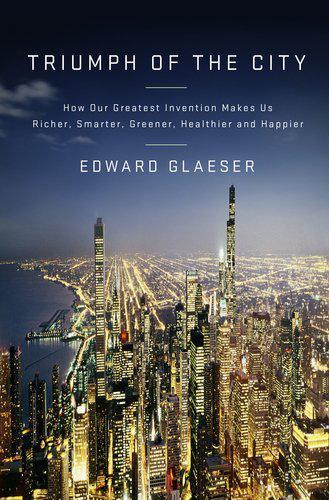
Triumph of the City: How Our Greatest Invention Makes Us Richer, Smarter, Greener, Healthier, and Happier
by
Edward L. Glaeser
Published 1 Jan 2011
Decades before E-ZPass, Vickrey recommended an electronic system for imposing these congestion charges, and he suggested that charges rise during rush hours, when congestion is worse. Decades of experience have proven Vickrey right. Building more roads almost never eliminates traffic delays, but congestion pricing does. In 1975, Singapore adopted a simple form of congestion pricing, charging motorists more for driving in the central city. Now the system is electronic and sophisticated and keeps that city traffic-jam free. In 2003, London adopted its own congestion charge and also saw traffic drop significantly. So why is congestion pricing so rare in the United States? Because politics trumps economics. Imposing a new fee on thousands of motorists is unpopular, and as a result, millions of hours of valuable time are needlessly lost by drivers stalled in traffic.
…
Until recently, it had to import much of its water from Malaysia, but it has overcome this problem by building desalination plants and a $3.65 billion Deep Tunnel Sewerage System, which was named Water Project of the Year in 2009 because of its “contribution to water technology and environmental protection.” The system runs for thirty miles, sixty-six feet or more below ground, removing sewage and then recycling the wastewater. You might expect traffic jams in the world’s second most densely populated nation, but Singapore’s streets are fluid because it adopted congestion pricing in 1975. Lee Kwan Yew’s initially simple system has constantly evolved, and today toll-collecting arches electronically charge cars throughout the city. Every car must have a transponder attached to a source of funds, and as a result, driving around this dense Asian city is easy. Buses move quickly on the uncongested roads.
…
Van Wyck Dies in Paris Home: First Mayor of Greater New York Had Lived Abroad for 12 Years; He Was Croker’s ‘Choice,’ His Administration Marked by So-Called Ice Trust, Ramapo Water Steal, and Police Scandals,” New York Times, Nov. 16, 1918, p. 13, ProQuest Historical Newspapers, Document ID: 97044205. 103 corruption decreases as education levels rise: Glaeser and Saks, “Corruption In America.” 103 The old model of machine politics ... became the age of the bureaucrat: Wallis et al., “Politics, Relief, and Reform.” 104 vehicle miles traveled increases: Duranton and Turner, “Fundamental Law of Road Congestion.” 104 The best way to reduce traffic congestion: Columbia University, “Practical Economic Solutions.” 105 “users of private cars ... their use imposes”: Vickrey, “New York’s Subway Fare Structure.” 105 congestion pricing ... traffic-jam free: Goh, “Congestion Management.” 105 London adopted its own congestion charge: Leape, “London Congestion Charge.” 106 first modern police force: Schivelbusch, “Policing of Street Lighting.” 106 filled with violent disorder: In 1650, Paris was the fourth-largest city in the world and the largest in Europe.
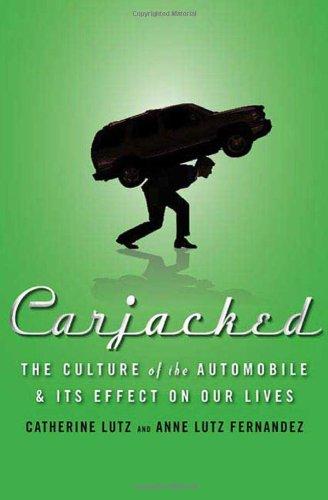
Carjacked: The Culture of the Automobile and Its Effect on Our Lives
by
Catherine Lutz
and
Anne Lutz Fernandez
Published 5 Jan 2010
Other proposals to reduce traffic congestion tend to be resisted, such as providing incentives to drivers to change their behavior by charging more at peak times on heavily used roads or in certain districts. Witness Mayor Mike Bloomberg’s highly publicized, unsuccessful attempt to institute the kind of “congestion pricing” measures in midtown Manhattan that have been effective in comparable metropolitan areas such as central London. In 2003, the city of London started charging a fee, currently £8 (about $13), to those driving private automobiles in the central area of the city on weekdays, exempting certain vehicles such as those used by the disabled and emergency services and providing a 90 percent discount to area residents.
…
Where reference was made at all to serious problems that drivers face, these were promptly shoved behind a curtain of talk about violent motorists.”60 The sudden focus on isolated cases of extreme road rage became a diversion from the growing systemic problems of traffic congestion and the need to explore solutions to them. It also became a way for politicians to avoid suggesting that drivers might drive less or encouraging them to do so through congestion pricing and other effective but unpopular traffic reduction strategies. Glassner contextualized the risks posed by road rage by comparing the small number of crash fatalities caused by angry drivers to those caused by drunk drivers. Still, irate drivers do kill, causing thousands of crashes every year.61 But research studies suggests that traffic conditions, as much as any preexisting mental health issues or other stressors, contribute to road rage.
…
In an ideal world, the federal government would simply ban automakers from producing the gasoline-based internal combustion engine, the National Highway Traffic Safety Administration’s budget would be doubled from its current paltry levels so that the true extent of carrelated death and disability could be monitored and the positive effect of changes measured, and new standards would require crash compatibility, more robust roof strength and rollover avoidance, and weight limits on vehicles. Many safety experts agree that heavier cars are often deadlier to other drivers and that lighter materials can be used in designing safer cars. 4. Apply revenue-generating measures that encourage a large public movement to rail and public transit, such as road user charges, congestion pricing, and truck weight and distance fees. 5. Amend regulations to encourage more equity and ecology from car insurance. Insurance companies should be required to offer only payby-the-mile coverage and to charge higher rates for SUVs and other massively destructive vehicles, which would help reduce driving and cut purchases of vehicles that pollute more.
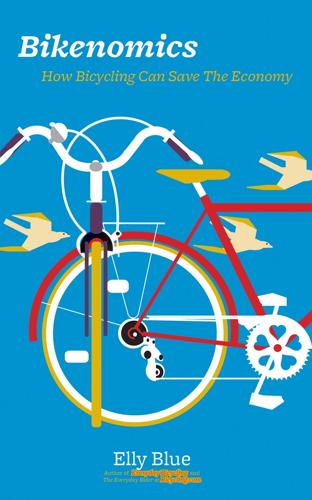
Bikenomics: How Bicycling Can Save the Economy (Bicycle)
by
Elly Blue
Published 29 Nov 2014
The term for this phenomenon is “induced demand.” By building a road and inviting the world to use it freely, we are in essence managing the demand for the road in a way that maximizes congestion. More effective demand management strategies exist, like congestion pricing—reducing demand by charging market rates for the use of a road. Congestion pricing has not yet come to the United States, though. New York City failed to pass what would essentially be a toll to drive a car or truck into the most traffic-jammed parts of the city during peak hours. But the strategy is working in London, Stockholm, Milan, and Singapore, to keep city streets moving during peak hours.
…
Equity is also an issue—it’s hard to make housing affordable to people who don’t own cars when you are required to invest in parking spaces.97 Induced demand is just as much a factor in parking as it is in traffic congestion. The more car parking spaces we build, the more people choose to drive, increasing the demand for yet more parking. Shoup’s prescription for cities with major parking woes is something like congestion pricing: Make parking more expensive. He suggests pricing parking so that there is always one spot open on every city block. This results in fewer people circling for parking, thus reducing congestion and emissions. It ensures higher turnover of parking spaces and thus better retail sales. And it opens the door for cities where the general population is not subsidizing the wealthiest residents, especially in cities like Washington, DC or Baltimore where nearly half of residents do not own cars.
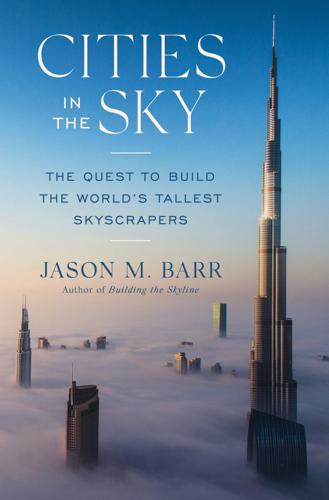
Cities in the Sky: The Quest to Build the World's Tallest Skyscrapers
by
Jason M. Barr
Published 13 May 2024
Strategically placed signs and transit apps can inform everyone of the costs and times of the different modes, and then people can decide what works best for them. If people had more choices, they would naturally eschew their cars, which would further enhance cities’ dynamism. A simpler, though less comprehensive, way to reduce car usage is through congestion pricing, where drivers pay a toll to enter the densest neighborhoods. The money raised is poured back into improving mass transit. Congestion pricing has been successfully established in London, Stockholm, and Singapore. Launched in 2003, the scheme for central London produced a 30 percent reduction in traffic congestion and increased car speeds by 30 percent for those who paid the fee.
…
from the bank: New York Times (1929), June 4. owners a mortgage: Tauranac (1997), p. 121. additional income: du Pont archives at the Hagley Museum. Manhattan skyscraper: New York Times (1951). about $2 billion: Barr and Ahlfeldt (2020). “… per cubic foot”: Heights of Building Commission (1913), p. 19. “… such congestion”: Price (1916). limit supply: Willis (1995). 130 feet (40 m, 10 floors): Nichols (1923); Willis (1995), pp. 50–51. the height limit: See chapter 9 of Schwieterman and Caspall (2006). “… taller one”: New York Times (1902). volume of the main structure: Schwieterman and Caspall (2006). Also see Willis (1995), pp. 50–65, and Weiss (1992), p. 207.
…
C., 37 classical architectural styles, 17, 48, 93, 151 climate crisis, 273–76, 277–81, 293 “Cloud Minders, The” (Star Trek episode), 182 cogeneration, 272 Commission for Architecture and the Built Environment (CABE), 83, 88, 108 Communist Party, 137, 138, 141, 150, 157, 160, 163 computer-based technologies, xvii–xviii, 64, 67–68, 102, 167–68 concrete. See skyscraper engineering Condit, Carl W., 17, 20 congestion pricing, 261–62 “Consequences of Living in High-Rise Buildings, The” (Gifford), 265–66, 267 constrained optimization problem, 63 Conventions for the Extension of Hong Kong Territory (Second Convention of Peking) (1898), 132 cost-plus system, 31 Council on Tall Buildings and Urban Habitat (CTBUH), 149, 186, 218–19, 299n COVID pandemic China’s zero-COVID policy and, 162–63, 164 Hong Kong’s zero-COVID policy and, 289 impacts of, 284, 289–90 post-pandemic building amenities pressure and, 270–71 returning to the offices and, 230 Sears (Willis) Tower rental occupancy and, 61 Shanghai Tower occupancy and, 154 skyscraper construction rate and, xvi as unforeseeable, 34 CTBUH (Council on Tall Buildings and Urban Habitat), 149, 186, 218–19, 299n Customs House (1927) (Shanghai), 151, 151 Daley, Richard J., 57, 58 damping systems, 75, 172, 240, 242 Davidson, Justin, 268 Death and Life of Great American Cities, The (Jacobs), 131 Deng Xiaoping, 138, 150 Dennis, Richard, 95 Dericks, Gerard H., 110–11 Destination Dispatching System (DDS), 172 Deutsche Bank Center (2004) (New York City), 249–50 Devaney, Steven, 101 Dewitt Chestnut Apartments (1966) (Chicago), 70, 71, 76–77 Downtown-Lower Manhattan Association (D-LMA), 196 du Pont, Pierre S., 36 Dubai Abu Dhabi rescue and, 202–3 Al Hekma Tower (2016), 165–66, 165 Burj Al Arab (1999), 201–2 capitalism and, 201 car dependency and, 203 Dubai World Trade Centre (1979), 193, 194, 199–200, 201 global economic connectivity and, 236 Gulf boom and, 201–2 incentives of, 195 international transformation of, 183–85 migrant workers and, 204 oil revenue and, 196 Petronas Towers (1998) and, 184 recorded history of, 193–96, 194 skyscraper benefits and, 189–90 sovereign wealth funds (SWFs) and, 183 See also Burj Khalifa Dubai Shopping Festival, 184 Dubai World Trade Centre (1979), 193, 194, 199–200, 201 Ducat, Arthur Charles, 5, 26 Dunlap, William, 59 Durst, Douglas, 273 Early, Zoe, 233 Economic Height, 64 ego theory Burj Khalifa and, 182, 190, 237 developers and, 15, 220, 227 Empire State Building and, xiv–xv, 30, 120, 254 Huxtable and, 217–18 as oversimplification of, xxii Sears (Willis) Tower and, 55–56, 57 as skyscraper heights key driver and, xix–xx Egyptian Pyramids, 29 Eiffel Tower, 29 Eken, Andrew J., 31, 32, 33 elevator systems, 172–73, 241, 279 Elgar, Edward, 97 Elizabeth (queen of United Kingdom), 199 Empire State Building (1931) (New York City), xii, 29, 38 as-of-right skyscraper, 91 aspect ratio of, 241 economic rationale for, 37–38 ego theory and, xiv–xv, 30, 120, 254 fast-track construction and, 31, 32–33 height of, xiii–xiv, 30, 37, 82, 113 iconic status of, xv, 135 interior and, 65 lighting of, xiv–xv, 276 masonry construction of, 68–69 observation decks and, xiii, xiv, xv, 38 revenue sources and, 60 rigid steel frame of, 8, 166 shape of, 39 site footprint and, 57 value of, xv–xvi, 61 Waldorf-Astoria Hotel and, 34–35 wedding cake design and, 39, 45–46 “Empty State Building,” 30, 39 Equitable Life Assurance Society Building (1870) (New York City), 93 Eskildsen, Paul R., 75 Essex House (1931) (New York City), 89 European architectural styles, 16, 48 European Gothic cathedrals, 65 European Renaissance, 16, 17 fast-track construction, 31, 32–33 Fay, C.

Road to Nowhere: What Silicon Valley Gets Wrong About the Future of Transportation
by
Paris Marx
Published 4 Jul 2022
The pedestrianization of a segment of the Rive Droite was an action that garnered a lot of attention, but it was just one piece of a much larger plan to remake Paris for its residents, instead of people who would drive in from elsewhere. This shift in urban policy did not begin with Hidalgo, but rather her Socialist predecessor Bertrand Delanoë, who became mayor in 2001. Delanoë rejected the congestion pricing that has captured the attention of US urbanists in recent years, and instead focused on altering the physical environment. He shifted road space from cars to buses, bikes, and sidewalks; introduced the Vélib’ bikeshare system; provided buses with dedicated lanes and signal priority; and, in the process, cut automobile use by 20 percent in just a few years.16 It has since fallen further as the physical environment was further transformed.
…
But we should also go beyond that to imagine a way of organizing a transportation system that is coordinated on multiple levels and planned with democratic input for equity, accessibility, and sustainability. On the city level, the marketization and commodification of transportation needs to be halted, including the implementation of congestion pricing mechanisms. Instead, the focus should be on altering the physical environment and providing the necessary services to encourage residents to shift from driving their personal vehicles to using public transit, cycling, or walking to their destinations. Facilitating that transition requires a significant improvement to transit services, effectively shifting the massive subsidies currently dedicated to automobiles and their infrastructure to bolster collective mobility and build dense communities around it.
…
Le Guin (blog), 2004, Ursulakleguinarchive.com. 11 Ibid. 12 Mimi Sheller, Mobility Justice: The Politics of Movement in an Age of Extremes, Verso Books, 2018, p. 46. 13 Murray Bookchin, “Utopia, Not Futurism: Why Doing the Impossible Is the Most Rational Thing We Can Do,” lecture at Toward Tomorrow Fair in Amherst, Massachusetts, trans. Constanze Huther, October 2, 2019 [August 24, 1978], Unevenearth.org. 14 Ibid. 15 Ibid. 16 Ben Fried, “How Paris Is Beating Traffic without Congestion Pricing,” Streetsblog USA, April 22, 2008, Usa.streetsblog.org. 17 Laura Bliss, “Los Angeles Passed a Historic Transit Tax. Why Isn’t It Working?,” CityLab, January 17, 2019, Bloomberg.com. 18 Alissa Walker, “We Don’t Need More Dedicated Places Where Cars Can Go Fast,” Curbed, December 20, 2018, Archive.curbed.com. 19 James Wilt, Do Androids Dream of Electric Cars?

The Second Machine Age: Work, Progress, and Prosperity in a Time of Brilliant Technologies
by
Erik Brynjolfsson
and
Andrew McAfee
Published 20 Jan 2014
At peak hours, traffic on Interstate 405 in Los Angeles crawls at fourteen miles per hour, more than quadrupling what should be an eight-minute drive. Congestion pricing, aided by electronic passes or digital cameras, can dynamically adjust the cost of the roadway so that drivers would only choose to drive when the total cost created, including the additional congestion, was less than the value of their trip. Congestion-reducing activities like carpooling, off-peak commuting, bicycling, telecommuting, and mass transit would all increase with congestion pricing in effect. Already Pigovian principles have been applied to revenue-generating segments of infrastructure like toll roads and London’s congestion zone, which reduces traffic and takes in money by charging motorists to drive into the city center during peak times.
…
Meanwhile, Singapore has implemented an Electronic Road Pricing System that has virtually eliminated congestion. Americans collectively spend over one hundred billion hours stuck in traffic jams, a testament to the fact that road pricing is not yet widely adopted. By some estimates, the revenues from optimal congestion pricing would be enough to eliminate all state taxes in California. In the past, it was impossible to meter road usage in a cost-effective way, so we settled for leaving it unpriced and putting up with what resulted: the kinds of long lines and waiting we rarely saw outside the former Soviet Union for other goods and services.
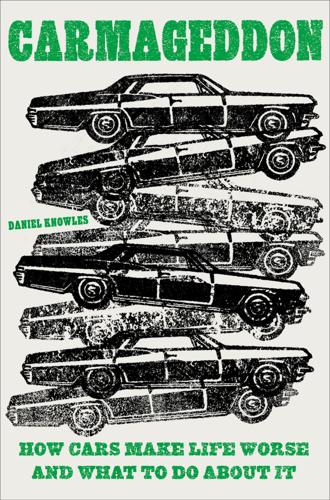
Carmageddon: How Cars Make Life Worse and What to Do About It
by
Daniel Knowles
Published 27 Mar 2023
By the mid-1970s, Schwartz had managed to persuade Lindsay of a bigger idea. That was to introduce tolling on the bridges into Manhattan. Most of those bridges had not been tolled since 1911. “At that time, I hadn’t heard the term congestion pricing,” recalls Schwartz. But he had heard of an economist, a man called William Vickrey, who had argued that drivers ought to pay for the land they use. “He schooled me on congestion pricing.” And Schwartz in turn schooled the city government. The city government and the State of New York passed a law imposing the new tolls. “I was as happy as could be, my city would be saved,” he says.
…
Though they did not win, the Labour Party, which was in government, adopted their views—and killed the London Motorway Box. New York had the chance to do more than just avoid the worst damage of car dependency. It could have become a world leader, not just an American one. In the 1970s, Sam Schwartz—he who invented the term “gridlock”—was one of the first city officials worldwide to propose congestion pricing. In his book Street Smart, which is part memoir, part polemic, Schwartz recounts that when he started in New York’s department of transportation, he felt like a traitor. He was a Brooklyn native who grew up without needing a car and preferred cities in which people could get around by public transport or just by walking.
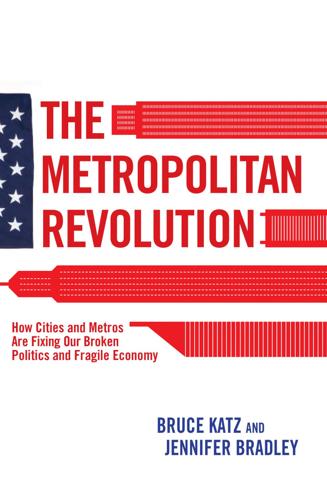
The Metropolitan Revolution: How Cities and Metros Are Fixing Our Broken Politics and Fragile Economy
by
Bruce Katz
and
Jennifer Bradley
Published 10 Jun 2013
In Detroit, the nation’s poster child for fiscal distress, the Canadian government is financing a new bridge across the Detroit River, private sector investment is remaking the energy supply and distribution system in the core of the city, and private and civic investors are driving the construction of the M1 lightrail network. Pushed to the wall, metros have latent ability to innovate in areas like infrastructure and find new ways to deliver and finance old goods. Market mechanisms such as value capture, congestion pricing, or metric-driven financing (around home energy retrofits, for example) are proven ways of raising private capital for public goods. There is more than one way to skin a cat, in essence, or to finance a transit project, a bridge, a port-dredging or water modernization project, an innovation district, or a citywide energy makeover. 09-2151-2 ch9.indd 199 5/20/13 6:56 PM 200 A REVOLUTION REALIZED The initiatives highlighted in this book show the intricate interplay of public, private, and civic sector investments.
…
German metros like Munich and Stuttgart offer relevant lessons on how to build and maintain centers of advanced manufacturing and production by integrated interventions on applied research, the commercialization and coproduction of innovation, and upgrading workforce skills.12 Scandinavian metros like Copenhagen are becoming magnets for companies that are innovating on 09-2151-2 ch9.indd 203 5/20/13 6:56 PM 204 A REVOLUTION REALIZED sustainable goods and services by embracing the environmental imperative of low carbon growth.13 Asian cities like Songdo and Singapore are experimenting with the application of smart technologies to manage congestion and lower energy use.14 Latin American cities like Bogotá and Curitiba have perfected the use of low-cost and flexible bus rapid transit.15 And metros across the globe like Singapore (again), Stockholm, and London have designed and implemented congestion pricing that not only reduces congestion and carbon emissions but also raises revenue for expansive transit systems.16 The means for spreading the revolution are getting simpler, sharper, and more powerful. Traditional metropolitan constituencies like the United States Conference of Mayors and the National Association of Counties, originally formed in the 1930s to focus on Washington decisionmakers, now see their role as informing their membership of the newest innovation, the most promising breakthrough.
…
See also Boyd Cohen, “Singapore Is on Its Way to Becoming an Icon Smart City,” Fast Company, May 2012 (www.fastcoexist.com/1679819/singapore-is-on-its-wayto-becoming-an-iconic-smart-city); Greg Lindsay, “Cisco’s Big Bet on New Songdo: Creating Cities from Scratch,” Fast Company, February 1, 2010 (www.fastcompany. com/1514547/ciscos-big-bet-new-songdo-creating-cities-scratch). 15. “Latin America’s Bus Rapid Transit Boom: Lessons for U.S. Public Transportation,” panel discussion, Brookings, March 8, 2011 (www.brookings.edu/ events/2011/03/08-bus-rapid-transit). 16. David King, Michael Manville, and Donald Shoup, “The Political Calculus of Congestion Pricing,” Transport Policy 14, no. 2 (2007), p. 114. 17. Janna Anderson, Jan Lauren Boyles, and Lee Rainie, “The Future of Higher Education” (Washington: Pew Internet and American Life Project, July 2012). 18. See Techonomy website (www.techonomy.com) and Code for America website (www.codeforamerica.org). 19.
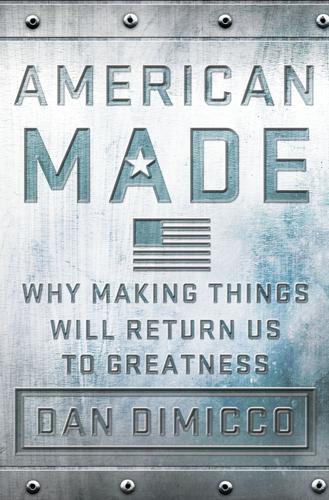
American Made: Why Making Things Will Return Us to Greatness
by
Dan Dimicco
Published 3 Mar 2015
I’m not necessarily in favor of privately owned toll roads, but if that’s what it takes to get the infrastructure improvements we need, so be it. Several U.S. cities are looking at “congestion pricing,” which is comparable to a toll on driving during peak traffic hours. Because freeway capacity is necessarily limited, the idea is to reduce traffic jams—along with pollution from all of those idling vehicles—by encouraging drivers to adjust when and where they drive. London, Stockholm, Singapore, Milan, and, here in the United States, Atlanta all use some form of congestion pricing on commuters. The Transportation Infrastructure Finance and Innovation Act of 1998 offers federal credit assistance to states for transit and other infrastructure improvements.
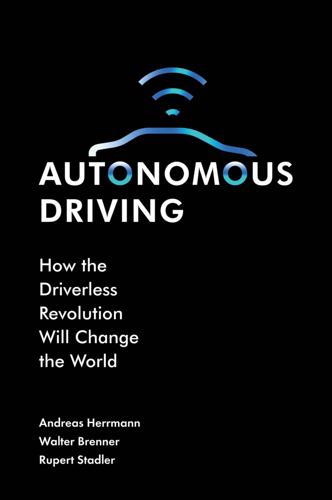
Autonomous Driving: How the Driverless Revolution Will Change the World
by
Andreas Herrmann
,
Walter Brenner
and
Rupert Stadler
Published 25 Mar 2018
In each direction, it consists of four free lanes along with two toll express lanes that rely on congestion pricing to ensure free-flowing travel conditions. During peak hours, traffic on the express lanes moves at a speed of 60 65 miles per hour, whereas the speed in the adjacent free lanes slows to 15 20 miles per hour. However, an express lane can accommodate nearly twice as many vehicles per hour as a free lane. The traffic needs to keep flowing evenly to ensure as high a throughput as possible despite a rising volume of traffic. Congestion pricing can correct this problem, but the issue can also be resolved by autonomous vehicles.
…
This page intentionally left blank INDEX A9 autobahn in Germany, 134, 135, 407 ACCEL, 324 Accelerating, 8, 22, 27, 59, 78, 91, 122, 295, 296 Access Economy, 344 Acoustic signals, 108 Ad-hoc mobility solutions, 354 Ad-hoc networks, 133 Adaptive cruise control, 4, 51, 72 74, 78, 86, 96, 113, 116, 289, 297, 333 Aerospace industry, 153 Agenda for auto industry culture change, 396 increasing speed, 398 service-oriented business model, 397 398 V-to-home and V-to-business applications, 399 Agile operating models, 330 Agriculture, 154 productivity, 155 sector, 154 157 Air pollution, 27 AirBnB, 311 Airplane electronics, 144 Aisin, 9 Albert (head of design at Yahoo), 228 Alexandra (founder and owner of Powerful Minds), 228 Alibaba Alipay payment system, 372 Alternative fuels, autonomous vehicles enabling use of, 305 Altruistic mode (a-drive mode), 252 Amazon, 138, 141, 311 American Trucking Association, 68 Android operating system, 327 Anthropomorphise products, 290 Appel Logistics transports, 167 Apple, 9, 138, 327 CarPlay, 285 Apple Mac OS, 247 Apple-type model, 323 Application layer, 119 software, 118 Artificial intelligence, 115, 255, 291, 332 333 Artificial neuronal networks, 114 115 Asia projects, 371 374 Assembly Row, 386 Assessment of Safety Standards for Automotive Electronic Control Systems, 144 Assistance systems, 71 77 Audi, 5, 130, 134, 137, 179, 211, 301, 318, 322, 398 Driverless Race Car, 5 piloted driving, 286 piloted-parking technology, 386 387 Audi A7, 44, 198, 282 427 428 Audi A8 series-car, 79, 180 Audi AI traffic jam pilot, 79 Audi Fit Driver service, 318 319 Audi piloted driving lab, 227, 229 Audi Q7, 74 assistance systems in, 75 Audi RS7, 43, 44, 79 autonomous racing car, 179 driverless, 227 Audi TTS, 43 Audi Urban Future Initiative, 384 386, 406 Augmented reality, 279 vision and example, 279 280 Authorities and cities, 171 173 Auto ISAC, 146 Autolib, 317, 344 Autoliv, 285 Automakers’ bug-bounty programs, 146 Automated car, 233, 246, 264, 289, 384 Automated driving division of labour between driver and driving system, 48 examples, 51 53 image, 177 levels of, 47 51 scenarios for making use of travelling time, 52 strategies, 53 56 technology, 160 Automated vehicles, 9, 174, 246 Automated Vehicles Index, 367 368 Automatic car, 233, 244 Automatic pedestrian highlighting, 78 Automation ironies of, 76 responsibility with increasing, 235 Automobile, 3, 21 locations, 405 manufacturers, 311 Index Automotive design, 265 266 Automotive Ethernet, 126 Automotive incumbents operate, 330 Automotive industry, 332 335, 367, 379, 397 Automotive technology, 327 328 AutoNet2030 project, 369 Autonomous buses, 14, 81, 158, 159, 175, 302 Autonomous cars, 25, 126, 197, 205 206, 233, 244, 270 expected worldwide sales of, 85 savings effects from, 67 68 Autonomous driving, 3, 8, 39, 62, 94, 111, 116, 120, 121 123, 141, 160 162, 171, 173, 207 208, 217, 247, 252, 266, 332 333, 379 applications, 10 12, 160 aspects for, 93 Audi car, 5 autonomous Audi TTS on Way to Pikes Peak, 43 in combination with autonomous loading hubs, 166 driving to hub, 213 ecosystem, 18 20, 131 element, 243 facts about, 306 functions, 74 impression, 40 industry, 16 18 living room in Autonomous Mercedes F015, 44 milestones of automotive development, 4 NuTonomy, 6 projects, 41 45 real-world model of, 92 scenarios, 211 215 science fiction, 39 41 technology, 9 10, 92 Index time management, 215 218 vehicles, 12 16 See also Human driving Autonomous driving failure, 221 consequence, 221 222 decision conflict in autonomous car, 223 design options, 222 223 influencer, 223 224 Autonomous Mercedes F015, living room in, 44 Autonomous mobility, 12, 13, 16 17, 172, 405 establishment as industry of future, 404 405 resistance to, 171 172 Autonomous Robocars, 81 Autonomous sharp, 274 ‘Autonomous soft’ mode, 274 Autonomous trucks, 161 from Daimler, 163 savings effects from, 68 69 Autonomous vehicles, 26, 81, 99, 138, 155, 182, 221, 238, 249, 255, 353 354 enabling use of alternative fuels, 305 integration in cities, 406 promoting tests with, 407 uses, 153 AutoVots fleet, 350 Backup levels, 127 Baidu apps, 338, 372 Base layer, 119 Becker, Jan, 42 43 Behavioural law, 234 Being driven, 61, 63, 78, 342 343 Ben-Noon, Ofer, 142, 143, 145 Benz, Carl, 3, 4 Bertha (autonomous research vehicle), 42 Big data, 313, 332 333 BlaBlaCar, 359 429 Blackfriars bridge, lidar print cloud of, 104 Blind-spot detection, 78 Bloggers, 225 227 Blonde Salad, The, 226 Bluetooth, 130, 142, 154 BMW, 6, 130, 137, 174, 180, 316, 320, 322, 332 333, 372, 398 3-series cars, 338 BMW i3, 27 holoactive touch, 285 Boeing 777 development, 243 Boeing, 787, 261 Bosch, 9, 181 182 Bosch, Robert, 333 Bosch suppliers, 315 BosWash, metropolitan region, 384 Budii car, 272 273 Business models, 311, 353 355 automobile manufacturers, 311 content creators, 319 320 data creators, 320 322 examples, 312 hardware creators, 314 315 options, 312 314 passenger looks for new products, 321 passenger visits website, 321 service creators, 316 319 software creators, 315 316 strategic mix, 322 323 Business vehicle, 15 Business-to-consumer car sharing, 342 343 Cadillac, 180 California PATH Research Reports, 298 299 Cambot, 290 Cameras, 111, 126 CAN bus, 126, 143 Capsule, 33 Car and ride sharing, studies on, 348 430 Car dealers, repair shops and insurance companies, 173 174 Car manufacturers, 328, 396 397 business model, 312 Car-pooling efforts, 364 365 Car-sharing programs, 364 365 service, 383 Car-sharing, 206 Car2Go, 317, 345 Casey Neistat, 226 Castillo, Jose, 364 365 Celebrities and bloggers, 225 227 Central driver assistance control unit, 124 Central processing unit, 96, 124 zFAS, 125 Centre for Economic and Business Research in London, 189 Chevrolet, 40 app from General Motors, 316 Spark EV, 27 Cisco, 41 CityMobil project, 369, 406 CityMobil2, 14, 157 Cognitive distraction, 287 Coherent European framework, 246 Committee on Autonomous Road Transport for Singapore, 347 Communication, 198 200 investing in communication infrastructure, 403 404 technology, 261 Community, 341 detection algorithms, 389 Companion app, 316 Compelling force, 223 Competitiveness Iain Forbes, 368 369 projects in Asia, 371 374 Index projects in Europe and United States, 369 371 projects in Israel, 374 375 Computer operating systems, 247 Computer-driven driving, 108 Computerised information processing, 109 Congestion pricing, 296 Connected car, 129 ad-hoc networks, 133 connected driving, 137 138 connected mobility, 138 development of mobile communication networks, 130 digital ecosystems, 138 eCall, 136 137 online services, 136 137 permanent networks, 130 statement by telecommunications experts, 132 133 V-to-I communication, 134 135 V-to-V communication, 133 134 V-to-X communication, 135 136 See also Digitised car Connected mobility, 129, 138 Connected vehicles, 138 vulnerability of, 142 Connected-car services, 313 Connectivity of vehicles, 147 Consumer-electronics companies, 285 Container Terminal, 159 Content creators, 319 320 Continental (automotive suppliers), 9, 284, 315 Continuous feedback, 281 Convenience, 302 304, 306 Conventional breakthrough approach, 332 Index Conventional broadband applications, 132 Conventional car manufacturing, 10 Cook, Tim, 182 Cooperative intelligent transport system (C-ITS), 369 370 Corporate Average Fuel Economy standard, 297 Cost(s), 187 192, 295 autonomous vehicles enabling use of alternative fuels, 305 fuel economy, 297 299 intelligent infrastructures, 299 301 land use, 304 operating costs, 301 302 relationship between road speed and road throughput, 296 vehicle throughput, 295 297 Croove app, 318 Culture, 330 change, 396 differences, 195 197 and organisational transformation, 395 Curtatone, Joseph, 387 Customers’ expectations attitudes, 204 207 incidents, 203 204 interview with 14 car dealers, 207 persuasion, 207 208 statements by two early adopters, 205 Cyber attacks, 141 Cyber hacking or failures in algorithms, 354 Cyber security, 141 146 Cyber-physical systems, 9 Daimler, 130 Data, 121 categories in vehicle, 147 creators, 320 322 431 from passengers, 94 95 privacy, 147 148 processing, 91 protection principles, 148 recorders, 239 Data-capturing technology, 103 Data-protection issues, 239 Database, 98 Decelerating, 91, 122 Decision-making mechanism, 369 Declaration of Amsterdam, 246 247 Deep learning, 115 Deep neural networks, 115 116 Deere, John, 154, 155 Deere, John, 154, 155, 263 Defense Advanced Research Project Agency (DARPA), 41 Degree of autonomous driving, 53 Degree of autonomy, 262 Degree of market penetration, 84 Degree of not-invented-here arrogance, 332 Degree of vehicle’s automation, 233 234 Delhi municipal government, 21 22 Delphi, 9, 181 Delphi Automotive Systems, 6 Demise of Kodak, 111 Denner, Volkmar, 333 334 Denso, 9 Depreciation, 345 Destination control, 299, 300 Digital company development, 395 396 Digital economy, 225 Digital ecosystems, 138 Digital light-processing technology, 277, 279 Digital maps, 101 Digital products, 267 Digitised car algorithms, 113 117 432 backup levels, 127 car as digitised product, 111 112 data, 121 drive recorder, 125 126 drive-by-wire, 122 over-provisioning, 127 processor, 122 125 software, 117 121 See also Connected car Digitising and design of vehicle, 265 267 Dilemma situations, 61 Direct attacks, 141 Direct connectivity of vehicle, 130 Disruptions in mobility, 31, 34 arguments, 34 35 history, 32 33 OICA, 34 Disruptive technologies, 221, 223, 402 Document operation-relevant data, 263 Doll, Claus, 166 Dongles, 142 Drees, Joachim, 165 ‘Drive boost’ mode, 274 “Drive me” project, 370 Drive recorder, 125 126 ‘Drive relax’ mode, 274 Drive-by-wire, 122 DriveNow, 317, 345 Driver, 235 role, 235 238 Driver distraction, 55 causes and consequences, 278 Driver-assistance systems, 53, 71, 160, 174, 222, 298, 333, 353 Driverless cars, 3, 7, 27 28, 222, 233, 244 taxis, 302 vans, 406 vehicles, 168 Index Driverless Audi RS7, 227 229 Driverless Race Car of Audi, 5 Driving manoeuvres, 91 modes, 107 oneself, 342 343 Drunk driving, 303 Dvorak keyboard, 242 Dynamic patterns of movement in city of London, 390 eCall.
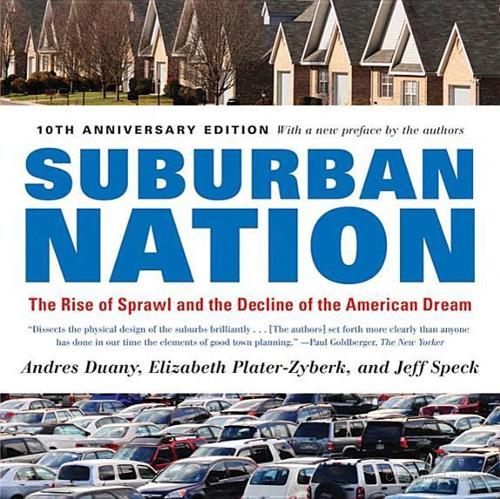
Suburban Nation
by
Andres Duany
,
Elizabeth Plater-Zyberk
and
Jeff Speck
Published 14 Sep 2010
If, as is now clear beyond any reasonable doubt, people maintain an equilibrium of just-bearable traffic, then the traffic engineers are wasting their time—and our money—on a whole new set of stopgap measures that produce temporary results at best. These measures, which include HOV (high-occupancy vehicle) lanes, congestion pricing, timed traffic lights, and “smart streets,” serve only to increase highway capacity, which causes more people to drive until the equilibrium condition of crowding returns. While certainly less wasteful than new construction, these measures also do nothing to address the real cause of traffic congestion, which is that people choose to put up with it.
…
(Rick) Chicago; Cabrini Green housing project;; Lake Street children: in new towns and villages; suburban; see also schools Churchill, Winston Cisneros, Henry citizen participation City Beautiful movement civic buildings; decay of; in new towns and villages; in traditional neighborhoods civic decorum classicism Clean Air Act Cleaver, Emmanuel Cleveland; Neighborhood Progress Foundation Clinton Administration clusters Cohen, Zev Cold War collector roads; new towns and villages and; width of commercial development, see malls; office facilities; retail; shopping centers community: abrogation by public sector of responsibility for; affordable housing and; citizen involvement in building; civic buildings and; developers and; government commitment to; homebuyers’preference for; impact of automotive infrastructure on; modes of development fostering, see new towns and villages; in public realm; variety and community policing Community Reinvestment Act commuters compliance review process congestion pricing Congrès Internationaux d’Architecture Moderne (CIAM) Congress, U.S. Congress for the New Urbanism; charter of connectivity continuity, retail convenience stores “cookie cutter” design Coral Gables (Florida) Cornell (Markham, Ontario) corner stores; transit stops at corporate parks corporations, disinvestment in inner cities by corridors cost of capital Countryside Preserve Countryside Reserve county policy crime; danger of automobile accidents versus; deterrence of; in environment of civic demoralization; impact of design on; in suburbs Crime Prevention Through Environmental Design (CPTED) cul-de-sacs; children in cultural events, urban curb radii curvilinear streets; minimum center-line radii of Dallas Davis, Mike Davis, Robert deconstruction densities, higher; economic efficiency of; in inner cities; and mixed-use development; parking and; public transit and departments of transportation, state (D.O.T.s) design: community, government policy on; crime control and; effect on behavior of; pedestrian-friendly, see pedestrian-friendly design; property value based on Des Moines (Iowa) Detroit developers; changes in land-use regulations opposed by; conventional wisdom of; decline of; inner city; market experts and; of new towns and villages; permitting process for; regional planning and; and rising expectations of consumers Diggstown (Norfolk, Virginia) dingbats disinvestment Disney World downtown business districts: decline of; revitalization of; see also inner cities Durning, Alan Thein Eastward Ho!
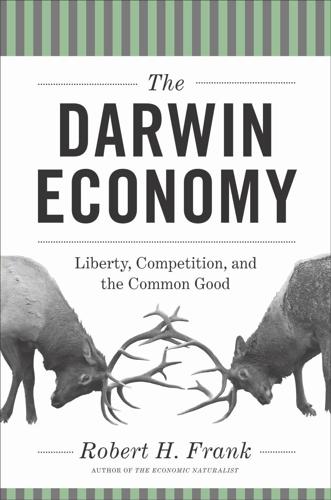
The Darwin Economy: Liberty, Competition, and the Common Good
by
Robert H. Frank
Published 3 Sep 2011
That strategy would enable us to reduce emissions of hydrocarbons and nitrous oxide at a cost of roughly $15 per pound.3 Because it has exempted these vehicles, however, the California legislature has mandated the development of electric vehicles, for which the cost of removing these compounds is some $900 per pound. Here, too, our reluctance to transfer income has proven costly to rich and poor alike. Economists have estimated that we could save billions of dollars in highway construction costs and wasteful traffic delays if we adopted a simple system of congestion pricing.4 Using variants of existing technology (for instance, the E-ZPass system currently in use on many turnpikes and bridges in the Northeast), cars could be equipped with small electronic receivers 114 CHAPTER SEVEN that would register road-use fees that varied with traffic congestion. Thus a motorist who drove across Manhattan during the midday rush might incur $10.00 in extra tolls levied automatically through this receiver.
…
The clear obstacle to adopting this system is the specter of the burden it would impose on poor motorists forced to venture out into heavy traffic. Never mind that the revenue and other savings from the new system would be much more than enough to support income transfers sufficient to cushion the blow. Unless we’re able to make the necessary transfers, congestion pricing will never be adopted. We will continue to incur highway construction and congestion costs that could easily have been avoided. These are hardly isolated examples. Rather, they’re part of a pervasive pattern in which our reluctance to transfer income to the poor leads us to address their concerns in other ways.
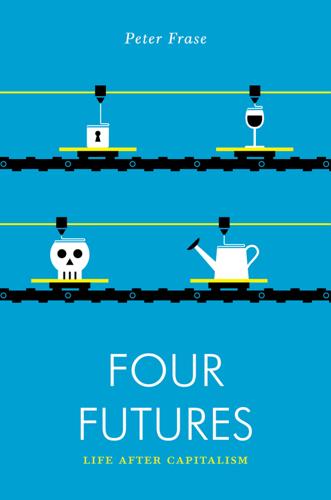
Four Futures: Life After Capitalism
by
Peter Frase
Published 10 Mar 2015
Despite the presence of price signals, and a market, it is no mystery who is responsible for the new regime of fluctuating meter prices: the city of Los Angeles, urged on by its adviser Donald Shoup. Indeed, it is the very visibility of the planners that makes projects like this controversial among those who take their right to free parking for granted and who oppose policies like congestion pricing that would mitigate traffic by charging drivers for entering busy areas. This is also part of what makes climate policies such as a carbon tax vulnerable to right-wing attack: whatever its “market-based” costume, everyone knows that the policy begins with government lawmakers and bureaucrats.
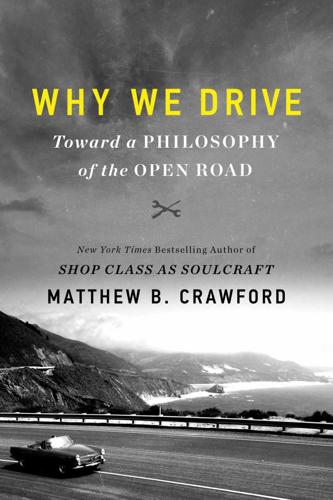
Why We Drive: Toward a Philosophy of the Open Road
by
Matthew B. Crawford
Published 8 Jun 2020
To see a problem that needs fixing often stems from a failure to see that a solution has already been achieved—through the skill and intelligence of ordinary people. For example, the practice of two-wheeled lane splitting is a free source of massive traffic efficiencies, a well-tried expedient used in cities all over the world.2 Let’s make it legal in the United States. If you like, view it as an unadministered form of “congestion pricing” that takes into account the fact that each of us has a “risk budget.” That is, we accept risk not because we are daredevils, but because we have things to do and places to go, and getting them done is worth something to us. Some of us have more willingness to pay attention to the cars around us, and are willing to pay out some bodily exposure into the traffic community, saving time for all concerned.
…
See also embodied cognition cold starts, 17 collective ownership citizenship, 274 COMDEX computer expo, 293 common good, 30, 43, 209, 240, 248, 313–314 common law, 286 commutes, air pollution and, 78 competitive instinct, 171 complacency, 100–101 computer geeks, 16 computer industry, auto industry compared to, 293–295. See also automation congestion pricing, 313 conjoined drivers, 23 connecting rods, 146 Connolly, John, 146 conversation, nonverbal parallels to, 257–258 conviviality, 247 convoy, 19 cops. See California Highway Patrol (CHP) corporate libertarianism, 43 corrosion, 130–131 countersteering, 167 courtesy pullovers, 23 crankshaft, 144–145, 149 crankshafts, 143 crashes, speeding-related, 226–228 Crawford, L.
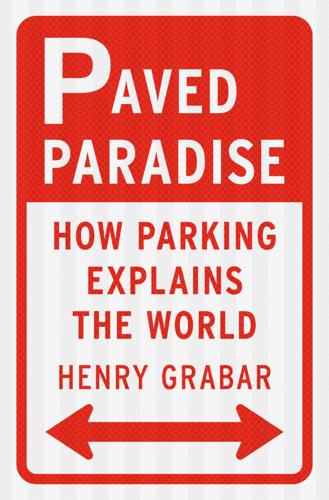
Paved Paradise: How Parking Explains the World
by
Henry Grabar
Published 8 May 2023
Lower-cost city-owned meters could not be installed near CPM meters, since that kind of competition was forbidden in the contract. Parking ticket fines had to be at least ten times meter rates, and unpaid tickets had to be sent to a collection agency. Chicago could not, like London or New York City, enact a congestion pricing plan. Block party? Festival? Parade? Expect an invoice from CPM. Chicago had leased a product it was still responsible for taking care of, and now the city’s long neglect of the parking situation would start to really cost Chicagoans. The Loop, the downtown area where the city’s L trains converge in a ring of shrieking elevated track, had been known for its corrupt parking practices for decades.
…
Go to note reference in text Between July 2011 and January 2013: Gregory Pierce and Donald Shoup, “SFpark: Pricing Parking by Demand,” Access 43 (Fall 2013): 20–28, accessmagazine.org/wp-content/uploads/sites/7/2015/10/SFpark.pdf. Go to note reference in text The prices have continued: Michael Manville and Daniel G. Chatman, “Theory Versus Implementation in Congestion-Priced Parking: An Evaluation of SFpark, 2011–2012,” Research in Transportation Economics 44, no. 1 (June 2014): 1–9. Go to note reference in text Price changes reduced the time: Jay Primus, “Charging the Right Prices for On-Street Parking,” in Shoup, Parking and the City, 334.
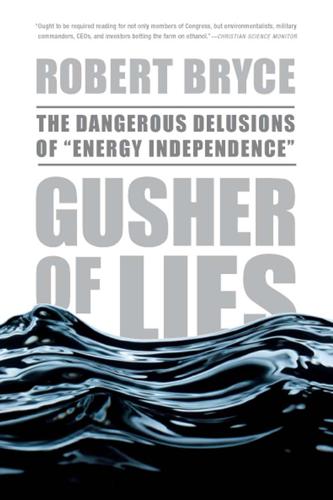
Gusher of Lies: The Dangerous Delusions of Energy Independence
by
Robert Bryce
Published 16 Mar 2011
Thus, all claims about algae diesel’s potential productivity must be taken with a large grain of salt. While nuclear, solar, and algae-based fuel may add new sources of energy, none of them will be enough on their own. There must also be continuing efforts to improve the efficiency of appliances, automobiles, and industrial processes. What else can be done? Well, congestion pricing—charging motorists for driving into traffic-heavy urban areas during key times of day—may reduce consumption. Another idea: mileage-based insurance policies, which would charge motorists for the amount that they drive, instead of the current system, which assesses drivers the same amount regardless of how much they drive.
…
See also Ethanol Center for American Progress, 5–6 Center for Security Policy, 120 Central Asia Institute, 266 Central Command, 98 Central Intelligence Agency, and Iran, 97 Centralized thermal power plants, 138 “The Challenge of Global Warming: Economic Models and Environmental Policy” (Nordhaus), 261 Chávez, Hugo, 76, 86, 172 Cheney, Dick, 99, 117, 120, 251 Chevron, 150–151 Childers, Therral, 24 China, 19, 50, 169, 290 and carbon dioxide emissions, 284 coal reserves in, 215, 274 energy consumption in, 70, 77, 87, 110, 112, 267–270 and Iran, 249 oil reserves in, 68 and Saudi Arabia, 240 Churchill, Winston, 82 Civil justice systems, 76 Climate change, 21–22, 41–45 adapting to, 272 See also Carbon dioxide emissions; Global warming 380 Index Clinton, Bill, 22, 117–118 and Arab oil embargo, 67 and energy independence rhetoric, 103–104 and ethanol, 145–146, 176 and oil and terror, 53, 54 Clinton, Hillary, 4, 245 and ethanol, 157 Club of Rome, 37 Coal, 11, 126, 211–216, 213 fig. 17, 283 and climate change, 43, 44 consumption of, 142–143 and price trends, 17–18 Coal exports, 211–212, 213 fig. 17 Coal imports, 211–212, 213 fig. 17 The Coal Question (Jevons), 142–143 Coal reserves in China, 215, 274 in U.S., 274 Coal-To-Liquid Fuel Promotion Act of 2006, 212 Coal-to-liquids (CTL), 65–66, 212, 214–216 and energy profitability, 214–215 Cobra II (Gordon and Trainor), 24 Cohen, Ariel, 115, 118–119 Cohen, Eliot, 117, 119, 120 Cold War, 96, 120 Colombia, 58 and oil infrastructure attacks, 31 Committee on the Present Danger, 120 Competition, 18 Compressed natural gas, 202, 284 Congestion pricing, 276 ConocoPhillips, 151 Constable, John, 108 Consumer electronics, 129–130 Corn ethanol, 64, 65, 147–150, 169, 289 and water resources, 188–192, 191 fig. 13 See also Ethanol Corn subsidies, 147–150, 148 fig. 9. See also Subsidies Corporate Average Fuel Economy (CAFE) standard, 140, 195 Corruption, and oil revenues, 75–76 Cropland resources, 160 CTL.
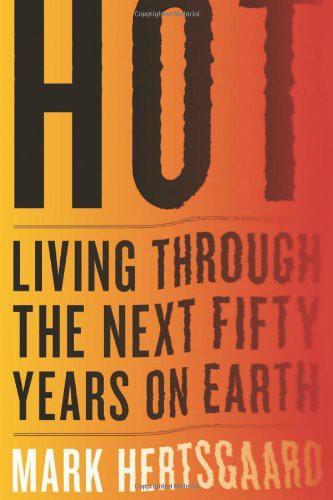
Hot: Living Through the Next Fifty Years on Earth
by
Mark Hertsgaard
Published 15 Jan 2011
Thomas Frieden, then New York City's public health commissioner (and later head of the national Centers for Disease Control and Prevention under President Obama), worried that stronger heat waves could cause coliform contamination of seawater and force the closure of city beaches. "And closing beaches is not a good idea when you have hundreds of thousands of people who want to go to the beach," he said. But mitigation has proven a difficult struggle for New York City. One reason is the state government, which in 2008 voted down Bloomberg's proposal for congestion pricing after the New York City Council had approved it. That defeat in turn undermined Bloomberg's proposed expansion of mass transit, which was to be financed in part by congestion fees. The state government had also declined the city's request for a sixfold increase in energy efficiency funding.
…
I witnessed Mayor Bloomberg's speech on Earth Day 2007, which is available, with supporting information about PlaNYC, at http://www.nyc.gov/html/planyc2030/html/home/home.shtml. The work of the city's Panel on Climate Change is at http://www.nyc.gov/html/om/pdf/2009/NPCC_CRI.pdf. Oppenheimer's vision of the siting for such a seawall was communicated in an author's interview, as were Thomas Frieden's views on health impacts. The New York legislature's rejection of congestion pricing, voted on April 7, 2008, was reported in contemporaneous press accounts; its rejection of additional energy efficiency funding was described by Aggarwala in an author's interview. The information and resources of NOAA's Climate Services program are available at http://www.climate.gov/#climateWatch.

Smart Cities: Big Data, Civic Hackers, and the Quest for a New Utopia
by
Anthony M. Townsend
Published 29 Sep 2013
Even in Singapore, with its long and proven tradition of technocratic planning, smart infrastructure projects move at a snail’s pace. Since the 1970s, city managers had used a paper-based system of tolls to control access to the congested city center.79 But when it came time to digitize the system in the 1990s, it took fully twelve years to implement the change. London’s congestion-pricing system took just a year to implement after the green light was given in February 2002. But that was after thirty-eight years of deliberation. The idea was first proposed in 1964.80 The fourth way things could go wrong is economic stagnation. If the malaise of the developing world is too much growth, for the rich cities of the global north it may be too little.
…
, 205 Hiltzik, Michael, 111 Hirshberg, Peter, 226–30, 315 Hoffman, Abbie, 227 Hollerith, Herman, 59–62, 64, 294 Hong Kong, 141 Hopper, Grace, 255 Hotspot 2.0, 55 House of Representatives, U.S., 57 Howard, Ebenezer, 94–98 Huawei, 49 Hudson Institute, 277 HunchWorks, 184 hyperlocal news site, 155 IBM, 7, 8, 9, 15, 38, 57, 62–69, 72, 82–91, 107, 223–25, 291, 294, 308, 316–17 Deep Thunder of, 66, 68, 82 Global Public Sector of, 65 “Intelligent Operations Center for Smarter Cities” of, 65 pre-history of, 57–62 as promoter of smart cities, 31–32 Smarter Cities Challenge of, 65, 83 Smarter Planet Campaign, 63–64 “System Dynamics for Smarter Cities” of, 82 ICT4D (Information and Communication Technologies for Development), 172–77, 180, 188, 190, 304 IDC, 55 IEEE Spectrum, 49 Igoe, Tom, 136–41 IMF, 26 Incheon International Airport, 24 India: mobile phones in, 178–79 urban development plans for, 30 urban housing needs of, 2 Indianapolis, Ind., 205–6 indoor positioning systems, 272 Industrial Dynamics (Forrester), 77 industrialization, of cities in nineteenth century, 5 information technology, 192–93, 241, 280 history of urban relationship to, 4–14 as undermining need for cities, 6 In-Stat, 39 “instrumentation,” sensor grids in, 32 Intel, 131–32, 153 alliance with Microsoft of, 290 Intellec-8, 153 International Brotherhood of Electrical Workers, on aging infrastructure, 38 International Energy Agency, 278 Internet: broadband vs. cable for, 2–3 “bufferbloat” problem in, 266 cafes for, 26 Cisco as leading supplier for, 44 cloud infrastructure for, 289, 294 dot-com bubble of, 121 DSL for, 2, 195 fiber-optic lines for, 2, 46, 171, 262, 287–89 hubs for, 260–61 human right as access to, 288 invention of, 107–11 “kill switch” of, 300 local area networks (LANs) for, 45 net neutrality for, 288 rapid expansion of, 6 social media for, 304 untethering from wire of, 49–56 of Victorian age, 44 voice calls in protocol of, 37 Internet of Things (big data), 3–4, 134–36, 139–41 Invisible Cities (Calvino), 305 iPhone, 6, 271 apps for, 200–201, 292 rapid spread of, 148 Iran, 266–67 Istanbul, 308 Italy, 61 Ito, Joi, 109 iTrans, 232 iTunes App Store, 148–49, 234 Ivrea, 137 Interaction Design Institute Ivrea (IDII) at, 137 Jabber, 293 Jacob, Nigel, 213–17, 224, 239, 242 Jacobs, Jane, 16, 97–98, 102–6, 234–35 Jacquard loom, 59 Jaguar, E-Type, 21 Jana, 183 Japan, 26, 262–63 Jevons paradox, 317 Jordan, Vincent, 197–98 Joroff, Michael, 25, 219–20, 305–6, 308 Journal of the American Institute of Planners, 78, 81 Jungle, The (Sinclair), 318 Jupiter Communications, 121 Kaczynski, Ted, 70 Kahn, Herman, 277 Kansas City, Mo., 36 Kaplan, Daniel, 225 Kargon, Robert, 96 Karnataka, India, corruption in, 12–13 Kasarda, John, 24 Katz, James, 56 Kaufman, Sarah, 159 Kenya, 179–80, 184–89 M-Pesa smart banking in, 179 Safaricom wireless carrier in, 179 Khanna, Parag, 224 Kirkpatrick, Robert, 181–84 Koolhaas, Rem, 112 Koonin, Steve, 314 Krugman, Paul, 74 Kundra, Vivek, 200, 204 Landau, Royston, 22 Langner, Ralph, 267 Lara, Marcos, 131 Lee, Douglass, 81–82, 88, 296–98 Lehrer, Jonah, 312 Leibowitz, Jon, 197, 287 Lerner, Sandy, 44 Levitas, Jake, 230 Levittown, N.Y., 231 LG, 23, 49 Light, Jennifer, 78–79 Lindsay, Greg, 24, 25, 28 Lindsay, John, 80, 207, 212 Linux, 241 Lippmann, Walter, on 1939 World’s Fair, 18 Living Cities, 206 Living Labs Global, 10, 244–45 Awards from, 245–46 Living PlanIT, 249, 289–90 load shedding, 39–41 load shifting, 39–41 Locke, Gary, 4 London, 94–95 congestion-pricing system in, 279–80 Crystal Palace in, 19–21, 23 first public electric streetlamps in, 35 growth of, 6 industrialization of, 5 Oyster card in, 316 Longmont, Colo., 197–98 Look Before We Leap, 197–98 “look smart,” 68 Löscher, Peter, 8, 38 Lynch, Kevin, 160 Macfarlane, W. W., 50–51 Make magazine, 137 malware, 266–69 management crisis, 63 Manhattan Project, 75 Mapunity, 179 Market Guardians, 229–30 Mark II Aiken Relay Calculator, 255 Marlow, Ian, 31 Maron, Mikel, 186 mash-ups, 149 mass mobile communications, 2 McAfee, 269 McHugh, Bibiana, 204 MCI, 36 McLaren, 290 McNamara, Robert, 80 McNamara, Whitney, 154–55 Meals on Wheels, 209 Media Metrix, 121 Meetup.com, 159 Megalopolis (Gottmann), 160–61 Megaphone Labs, 301–2 Meller, Helen, 113–14, 283351 Menino, Tom, 212–13, 240 microcontroller, 135–36, 138–39 Microsoft, 13, 290 alliance with Intel of, 290 Miller, Elan, 319 Miller, Jeremie, 293 Minnesota, University of, 35 Minot, Charles, 5 Mirror Worlds (Gelernter), 69–73, 89, 298 MIT, 25, 59, 76–77, 218–20 Media Lab Lincos (Little Intelligent Communities) at, 176–77 SENSEable City Lab at, 161 Urban Systems Laboratory at, 81 Mitchell, William, 218–19, 285 Miyako, 263 mobile cellular broadband, 2, 127–34, 178–81 mobile devices, 50–56, 232 apps for, 55 bandwidth for, 55 as catalyst for urban density, 3 military use of, 50 for parking, 244–45 in philanthropy, 181–84 in police work, 51, 272 radios as, 50–51, 55 as records of activity, 271–72 smartphones as, 2 solar power for, 179–80 spread of, 2 mobile phones, 51–56, 177–81 Bedouin use of, 180 early days of, 123, 127–33 global number of, 3 location tracking of, 271–72 as most successful consumer electronic device, 3 Moldova, 168–72 “e-Transformation” in, 169–72 Molella, Arthur, 96 MongoDB, 209 Morar, Natalia, 169 Morgan, J.
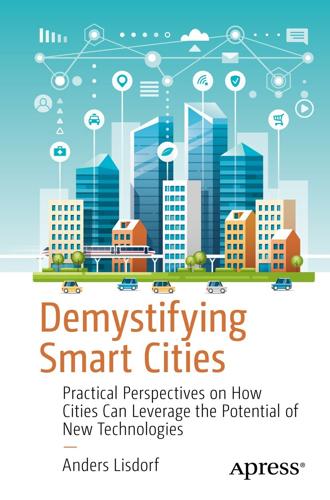
Demystifying Smart Cities
by
Anders Lisdorf
Private transit – The personal vehicle has still not died since it is unique in providing the greatest flexibility in terms of mobility. Congestion makes this a challenge for people and goods moving around. Consequently, smart city applications have targeted traffic regulation to avoid congestion. This can be through congestion pricing, taxing, or traffic regulation. Safety Keeping the businesses, residents, and visitors safe is a crucial goal for any city and an important parameter in the popularity and growth of a city.Crime – Increases disproportionally when cities grow larger and the people of the city will make no pause complaining about crime to the local government.
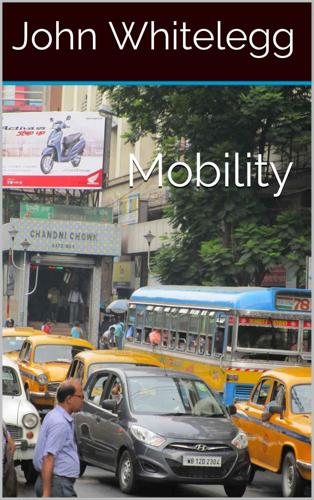
Mobility: A New Urban Design and Transport Planning Philosophy for a Sustainable Future
by
John Whitelegg
Published 1 Sep 2015
It recommends that pedestrians, cyclists and users of other modes of transport that involve physical activity are given the highest priority. It suggests 5 specific interventions that would deliver this prioritisation: Reallocate road space so that more space is given to pedestrians and cyclists. Restrict motor vehicle access and reduce highway capacity. Introduce road user charges e.g. the London and Stockholm congestion pricing schemes. Introduce traffic calming measures to reduce the speed and volume of vehicles. Promote and deliver safe routes to school. These interventions are already well known though still not applied in the majority of urban areas in a systematic and synergistic way. UK transport planning is especially resistant to highway space reallocation and vehicular traffic reductions, so that, for example, streets under severe pressure from rat-running could be closed off to through traffic.
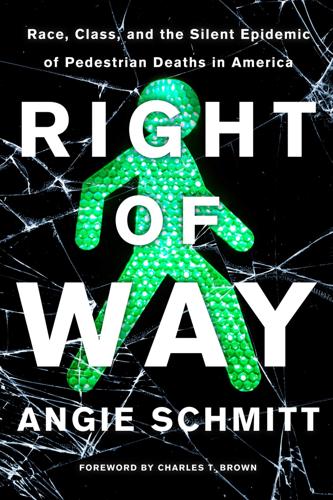
Right of Way: Race, Class, and the Silent Epidemic of Pedestrian Deaths in America
by
Angie Schmitt
Published 26 Aug 2020
When a far-right government won power in the city the following year and called for reversing the ban, tens of thousands of protesters flooded the streets38 and were successful in winning political support to continue the car-free zone. In addition, both Paris and London have long-term plans to phase out cars from central areas and streets. Already London has imposed congestion pricing to limit traffic in its central area. In addition, the city imposes steep fees on high-polluting vehicles within its designated Ultra Low Emissions Zone. None of these policies would be possible without generous support for transit and years of work building bike facilities and other supportive infrastructure.
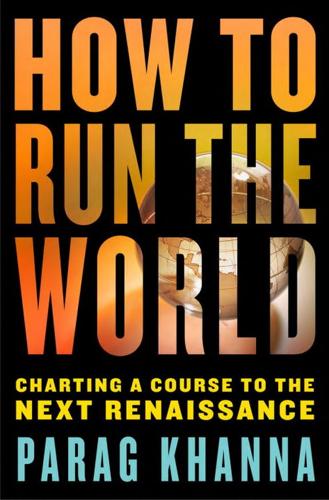
How to Run the World: Charting a Course to the Next Renaissance
by
Parag Khanna
Published 11 Jan 2011
In Florida, a planned coal plant in the Everglades was rejected in favor of a solar cell farm, oil heavyweight Chevron is also the largest installer of solar cells in California, and in New Mexico, a symbiosis is forming among solar cell companies, conservation biologists dedicated to protecting wildlife, and universities training graduates in environmental science. In a world where less than fifty cities cause most of the greenhouse gas output, curbing emissions is as much the job of mayors and governors as presidents. Stockholm and London began congestion pricing earlier this past decade, while Copenhagen has steadily removed parking places in the city center to encourage people to take buses, ride bicycles, or walk. Berlin has contracted companies to green fifteen hundred buildings, reducing the city’s carbon footprint by 25 percent. The greening of the Empire State Building presently under way in New York City is self-financing through savings in utility bills and will achieve the emissions reduction equivalent of taking nineteen thousand cars off the street.
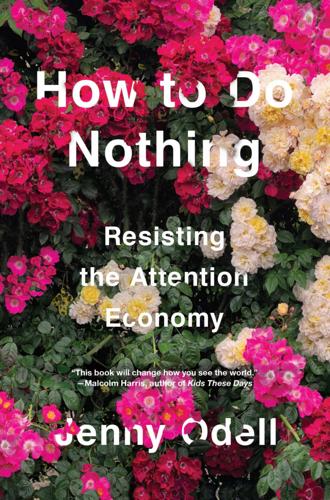
How to Do Nothing
by
Jenny Odell
Published 8 Apr 2019
Pressed up against each other in neat rectangles, I see the following: An article on Al Jazeera by a woman whose cousin was killed at school by ISIL An article about the Rohingya Muslims fleeing Myanmar last year An announcement that @dasharezøne (a joke account) is selling new T-shirts Someone arguing for congestion pricing in Santa Monica, California Someone wishing happy birthday to former NASA worker Katherine Johnson A video of NBC announcing the death of Senator McCain and shortly afterward cutting to people dressed as dolphins appearing to masturbate onstage Photos of Yogi Bear mascot statues dumped in a forest A job alert for director of the landscape architecture program at Morgan State University An article on protests as the Pope visits Dublin A photo of a yet another fire erupting, this time in the Santa Ana Mountains Someone’s data visualization of his daughter’s sleeping habits during her first year A plug for someone’s upcoming book about the anarchist scene in Chicago An Apple ad for Music Lab, starring Florence Welch Spatial and temporal context both have to do with the neighboring entities around something that help define it.

Capitalism Without Capital: The Rise of the Intangible Economy
by
Jonathan Haskel
and
Stian Westlake
Published 7 Nov 2017
As Edward Glaeser, one of the leading economists working on cities, has put it, one of the puzzles of urbanization is the increased willingness of people to pay very high rents to live next door to other people paying very high rents (Glaeser 2011). This seems a particular puzzle in our connected world, where the importance of proximity would surely have declined. One answer is that the spillover benefits of living in cities have increased. Indeed, given the undoubted increase in the disbenefits—congestion, prices, and air pollution—there must be some offsetting benefits, and those might very well be around the chances of more interactions and collaborations. All this means that in an intangible-intensive economy, the ability to make good the problem of spillovers becomes very important. This calls for a particular range of skills: technical skills to understand the intangibles themselves, such as scientific or engineering knowledge; in some cases, legal expertise or a talent for deal-making; in others, softer skills like leadership and networking.

Ecovillages: Lessons for Sustainable Community
by
Karen T. Litfin
Published 16 Dec 2013
Likewise, when cities adopt new mixed-use zoning codes that enable people to live near their workplaces, new ways of schooling for sustainability, and new policies that expand urban food production, they are, in effect, scaling up the ecovillage model – even if they’ve never heard of ecovillages. The same can be said for congestion pricing on public transportation or charging households by the volume of their garbage or adopting land-use planning strategies that incorporate wildlife corridors. And some urban initiatives, like the Living Building Challenge (which promotes buildings that heat and cool themselves, collect and store sunlight, produce food, and recycle nearly all of their water and waste) go beyond any technologies I encountered in ecovillages.
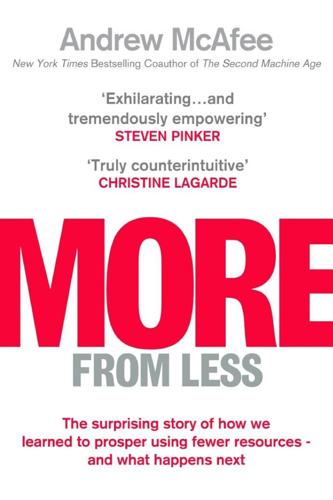
More From Less: The Surprising Story of How We Learned to Prosper Using Fewer Resources – and What Happens Next
by
Andrew McAfee
Published 30 Sep 2019
As this shift continues, we’ll need fewer tons of steel, aluminum, plastic, gasoline, and other resources to move the world’s people and goods around. We might also experience less congestion and gridlock as we try to get around. Bikes and scooters take up little space compared to cars, so streets can accommodate many more of them. Technology also gives us the ability to implement many forms of “congestion pricing,” which has been shown to reduce gridlock by making car access to busy streets expensive enough that people use other options. The most intriguing future transportation platform of all might be the sky. The same technologies that power today’s small drones can be scaled up to build “air taxis” with as many as eight propellers and no pilot.
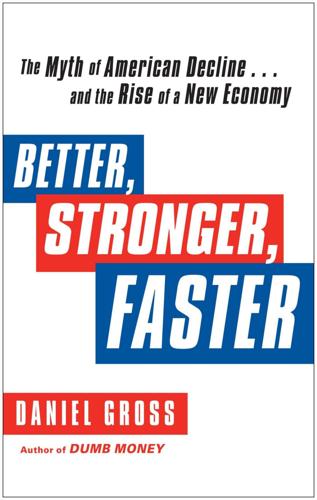
Better, Stronger, Faster: The Myth of American Decline . . . And the Rise of a New Economy
by
Daniel Gross
Published 7 May 2012
Sophisticates who travel to Japan and Europe see intelligently designed policies that seek to maintain the quality of life amid constrained resources. Japan’s Super Cool Biz mandate keeps the temperature in Tokyo office buildings above 80 degrees in the summer as part of a national effort to curb energy use. London’s traffic-battling congestion-pricing scheme, under which motorists pay for the privilege of driving into central London, was rejected in New York, where such a plan could do wonders. Germany’s passive-solar homes, which maintain constant temperatures without using heat or air-conditioning; Scandinavia’s aggressive gas and carbon taxes, which encourage fuel efficiency and the development of alternative energy—the bien pensant view all of these small-living initiatives as necessary to avoid economic erosion.
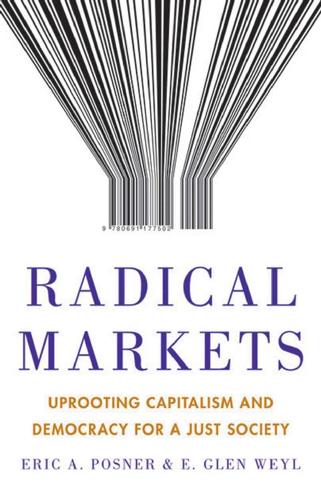
Radical Markets: Uprooting Capitalism and Democracy for a Just Society
by
Eric Posner
and
E. Weyl
Published 14 May 2018
Vickrey’s ideas have transformed economic theory and had an impact on policy. Governments around the world use auctions based on Vickrey’s ideas to sell licenses to use radio spectrum. Facebook, Google, and Bing use a system derived from Vickrey’s auction to allocate advertising space on their web pages. Vickrey’s insights about urban planning and congestion pricing are slowly changing the face of cities, and they play an important role in the pricing policies of ride-hailing apps like Uber and Lyft.2 However, none of these applications reflects the ambition that sparked Vickrey’s work. When Vickrey won the Nobel Prize, he reportedly hoped to use the award as a “bully pulpit” to bring George’s transformative ideas and the radical potential of mechanism design to a broader audience.3 Yet Vickrey died of a heart attack three days after learning of his prize.
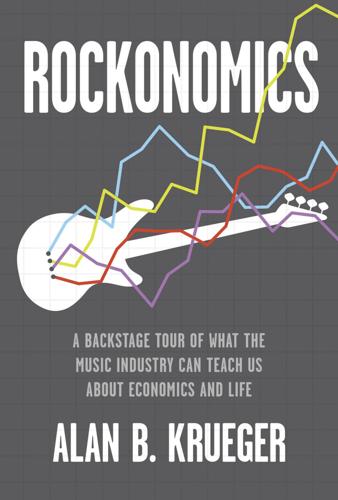
Rockonomics: A Backstage Tour of What the Music Industry Can Teach Us About Economics and Life
by
Alan B. Krueger
Published 3 Jun 2019
Even in a block party economy, market forces cannot be entirely fenced off. If ticket prices are not set with an eye toward balancing supply and demand, the result will be an empty house (if prices are set too high) or a large secondary market where resale prices are much higher than the list value (if prices are set too low). Resistance to congestion pricing, a method for charging drivers a higher price when roads are congested, has left roads from Los Angeles to New York City gridlocked with traffic during rush hour. When asked about the tension in concert ticket pricing, Richard Thaler, the University of Chicago economist who won a Nobel Prize for his seminal contributions to behavioral economics, observed, “A good rule of thumb is we shouldn’t impose a set of rules that will create moral outrage, even if that moral outrage seems stupid to economists.”21 One indication of the distance that concerts have traveled in the direction of charging market-determined prices is the extent to which ticket prices vary within the venue, from the worst seat to the best seat.
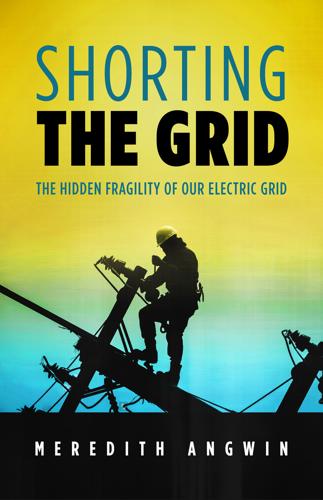
Shorting the Grid: The Hidden Fragility of Our Electric Grid
by
Meredith. Angwin
Published 18 Oct 2020
load shedding: Controlled or scheduled power outages (controlled blackouts) to balance the demand for electricity with a limited supply of electricity. locational marginal prices (LMP): Grid price of electric energy in different locations on the grid. LMP prices are usually expressed as $/MWh. Locational pricing is affected by the general energy price (such as the price at a central hub), line losses, and congestion pricing. LSE: Load-serving entity. merit order: See Economic Dispatch. Midcontinent ISO (MISO): The Regional Transmission Organization whose territory covers much of the Midwest and some areas of the South. Minimum Offer Price Rule (MOPR): In the ISO-NE Forward Capacity Market, a rule requiring generators to offer capacity at a price at or above a floor set for each type of resource.
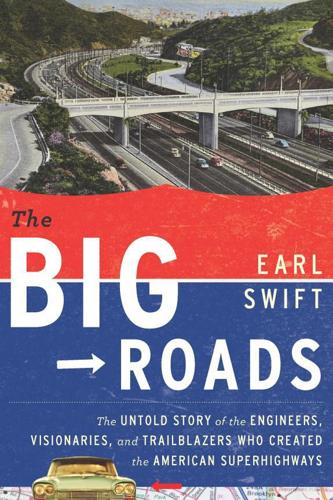
The Big Roads: The Untold Story of the Engineers, Visionaries, and Trailblazers Who Created the American Superhighways
by
Earl Swift
Published 8 Jun 2011
A computer chip in the car might communicate with the pump, say, to calculate how far you've driven since your last fill-up, and your tax could be assessed and collected on the spot. Fair as the idea seems, it raises some nettlesome privacy issues; not everyone is thrilled at the notion that Big Brother may have another means of tracking your movements. Even more ambitious is "congestion pricing," which would require motorists to pay for the pleasure of using certain key routes according to market forces—more when demand is higher, less when the traffic's light. Such systems would rely on electronic devices carried aboard each vehicle, eliminating the hassle of tollbooths and enabling road officials to adjust rates by the quarter, the month, or even several times an hour.
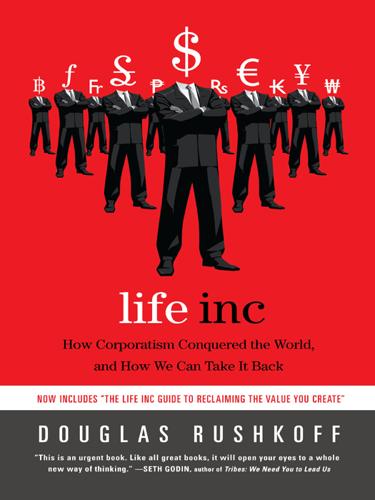
Life Inc.: How the World Became a Corporation and How to Take It Back
by
Douglas Rushkoff
Published 1 Jun 2009
While cities such as London, Paris, Chicago, and Portland were rolling out innovative transportation reforms and ambitious long-term sustainability plans, New York’s streets were still mostly ruled by a 1950s traffic-engineering mind-set aimed at maximizing the city’s capacity for motor vehicles. While other world cities were building new bike infrastructure, pedestrian plazas, bus rapid transit, and congestion pricing systems, New York City government still treated motor vehicle traffic as something akin to the weather—a force beyond the control of mere mortals. Though few issues touch New Yorkers’ lives more personally on a more regular basis, transportation was a third-tier issue at City Hall. No one, it seemed, was even paying attention to it.

City: A Guidebook for the Urban Age
by
P. D. Smith
Published 19 Jun 2012
A reduction of eighty thousand cars per day in London has been achieved, although it still has a relatively high rate of car use (36 per cent) compared to New York City (30 per cent) or Istanbul (13 per cent).54 Congestion charging has been adopted in Stockholm, Milan and Rome, but Mayor Bloomberg’s 2008 proposal for congestion pricing in New York was not implemented. Currently, weekday traffic in Manhattan’s business district moves at an average of 9.5mph, which, as the New York Times says, is ‘about the speed of a farmyard chicken at full gallop’.55 And this is in the city that has the lowest automobile-to-resident ratio of any city in the United States: over three-quarters of Manhattan’s households don’t own a car.
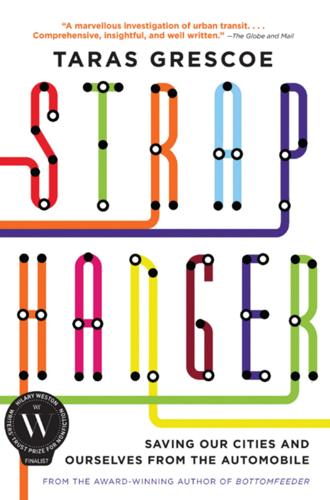
Straphanger
by
Taras Grescoe
Published 8 Sep 2011
By charging a new bridge toll, New York would have followed England’s example, where an £8 charge for every vehicle entering central London has decreased congestion by almost a third (the charge is used to fund public transport). The New York City Council passed the legislation, but it was defeated by the state legislature in Albany. Which raises the question: If only 5 percent of commuters get to work by car, who are all these drivers clogging the streets of Manhattan—the ones who presumably oppose congestion pricing—and where do they come from? About 750,000 motor vehicles enter the central business district every day. Thanks to Moses, who made sure that almost every major highway in the region led to Manhattan, one-fifth are just passing through; a solid majority come from areas in Queens, Brooklyn, and Long Island that are poorly served by transit.
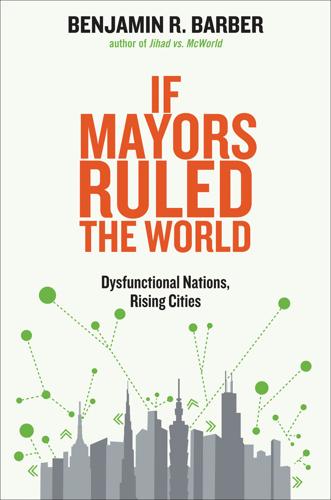
If Mayors Ruled the World: Dysfunctional Nations, Rising Cities
by
Benjamin R. Barber
Published 5 Nov 2013
As mayor, he talked like a businessman, and as a businessman today he talks like a mayor: “We don’t have the luxury of giving speeches and making promises,” he observes. Good as his word, he has focused on problem solving in issue areas that cities around the world share. He was and is about making cities work and fixing the things that get in the way. He raised taxes when he had to, pushed for congestion pricing (blocked by the state), inaugurated bike lanes and a New Housing Marketplace Plan, greened buildings (the source of much of New York carbon pollution), and banned big sugary sodas. And he helped establish the network Mayors Against Illegal Guns in the United States and the C40 Cities to combat climate change worldwide.

Good Economics for Hard Times: Better Answers to Our Biggest Problems
by
Abhijit V. Banerjee
and
Esther Duflo
Published 12 Nov 2019
City dwellers can easily afford to pay the farmers not to burn their crops, and to instead use machines to bury them and ready the soil for the next planting. The government could ban open fires in the city and create heated rooms where the poor could gather on cold nights. It could replace trash-burning with a more modern trash collection and treatment system. It could ban old cars (or in fact ban diesel-fueled cars altogether) and introduce congestion pricing or another form of congestion management.34 It could enforce more vigorously the tough industrial pollution standards on the books but not typically respected. It could improve the public transportation system. It could shut down or upgrade the large thermal plants operating within the city.

WTF?: What's the Future and Why It's Up to Us
by
Tim O'Reilly
Published 9 Oct 2017
Speed might be less important than the quality of the algorithm driving the car, the fact that the car has been updated to the latest version, and that it is equipped with adequate sensors. The goal, after all, is not to have cars go more slowly than they might otherwise, but to make our roads safe. Congestion pricing on tolls, designed to reduce traffic to city centers, is another example. Smart parking meters have similar capabilities—parking can cost more at peak times, less off-peak, just like plane tickets or hotel rooms. But perhaps more important, smart parking meters can report whether they are occupied or not, and eventually give guidance to drivers and car navigation systems, reducing the amount of time spent circling aimlessly looking for a parking space.
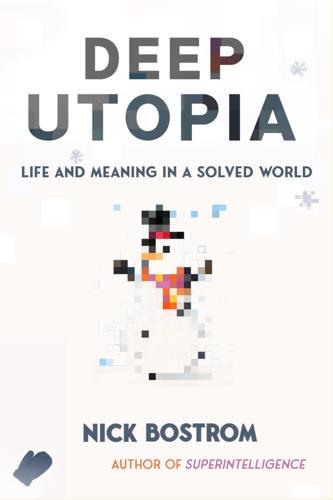
Deep Utopia: Life and Meaning in a Solved World
by
Nick Bostrom
Published 26 Mar 2024
Nevertheless, since the issue of traffic came up… I will not restrain myself from a little grouse about how public policy often fails to internalize the externalities that flow from the pursuit of positional goods, both ones that reflect intrinsic scarcity and ones that are more contingent in nature. Even with a phenomenon as basic as road congestion, where the causes are entirely obvious and the effects uncontroversially bad, our society scores an “F”. We could, of course, easily eliminate congestion by introducing congestion pricing. But instead, the solution that our society has adopted is—to buy a bigger car. One that raises the driver higher above the road, so that we can at least look down on the other poor sods while we wait for the traffic to move… Thus we embrace the vast economic costs from lost working hours, health-destroying particulate pollutants, climate-wrecking carbon dioxide emissions, stress, noise, and the blockading of emergency response vehicles.
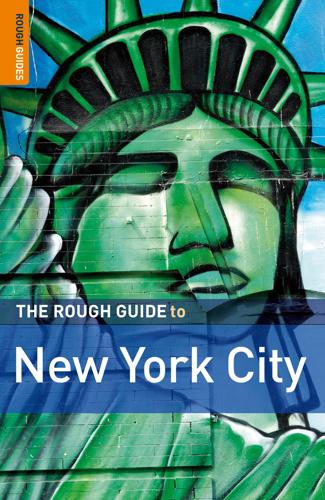
The Rough Guide to New York City
by
Martin Dunford
Published 2 Jan 2009
Several high-profile incidents involving shocking allegations of police brutality marred Giuliani’s second term, but these issues would all be superseded by events that would shock the city – and cause the locals to lean on Giuliani once more. 439 CONTEXTS | History 440 in a smoke-free environment, and smokers have gotten used to lighting up outside. In 2004 Bloomberg handily won re-election to a second term, during which he signed a law banning “trans-fats” in New York restaurants, pushed through a plan to replace the city’s 13,000 taxicabs with hybrid vehicles by 2012, and proposed a congestion pricing scheme to reduce traffic in Manhattan similar to the one in London. Only the last plan has met with significant resistance, mainly from upstate legislators and outer-boroughs commuters. Not until the fall of 2007 did the economy begin to slump once more, as Wall Street registered heavy losses connected to the subprime mortgage crisis.

The Stack: On Software and Sovereignty
by
Benjamin H. Bratton
Published 19 Feb 2016
The Climate Group's Smart2020: Enabling the Low Carbon Economy in the Information Age report issues confident, sunny scenarios for carbon savings from ICT in five critical areas: smart grids, transportation, dematerialization, buildings, and information management. The key interventions include the more nimble transmission grids as discussed above, distributed energy storage systems, congestion pricing, vehicle-to-grid charging and energy storage, teleconferencing, desktop virtualization, building and facility management, fine-grain metering, and supply chain and logistical optimization. The conclusion of the report is that if ICT is more deeply integrated into the fabric of industrial economies, especially in China and India, it would realize a total carbon savings that is five times greater than the sector's direct footprint based on projected growth (ICT's direct footprint is estimated to be 1.4 GtCO2e in 2020, but the total ICT-enabled abatement is estimated to be a savings of 7.9 GtCO2e).
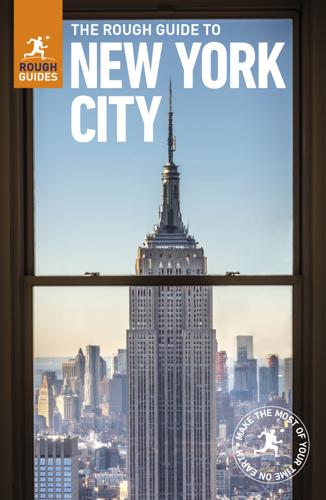
The Rough Guide to New York City
by
Rough Guides
Published 21 May 2018
Bar owners, naturally, fought the move, but it turned out to be good for business. In 2005 Bloomberg won re-election to a second term, during which he signed a law banning “trans-fats” in New York restaurants, unveiled a plan to replace the city’s thirteen thousand taxicabs with hybrid vehicles (though it later got tripped up in the court system), and proposed a congestion pricing scheme to reduce traffic in Manhattan similar to the one in London. In autumn 2007 the economy began to slump once more, as Wall Street registered heavy losses connected to the subprime mortgage crisis. The following year was a tough one for the city and some of its political figures. On Wall Street, investment banking giant Bear Stearns hit rock bottom and was bought out by JPMorgan, and later in the year Lehman Brothers declared bankruptcy.
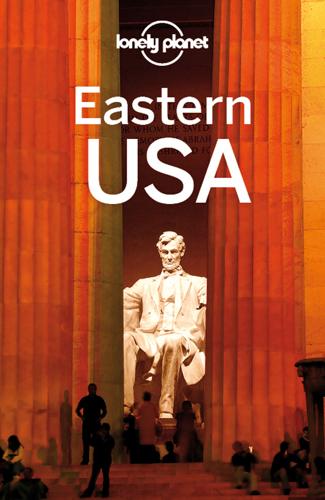
Eastern USA
by
Lonely Planet
Reelected for a second term in November 2005, Bloomberg won a third term in 2009 after the passage of a highly controversial amendment that allowed him to run. Bloomberg is known as an independent political pragmatist, and his administration has earned both raves and criticism for its dual pursuit of environmental and development goals (the citywide nonsmoking law has proved popular, while congestion pricing to combat gridlock failed to get approval). ICONIC NYC Recognizing that any New York City highlights list is inevitably abbreviated, necessary shorthand for a city with so much to do and see, the following offers a few sights not to miss on a short visit: »Museums – The massive and exceptional Metropolitan Museum of Art (Click here) can occupy your entire visit.
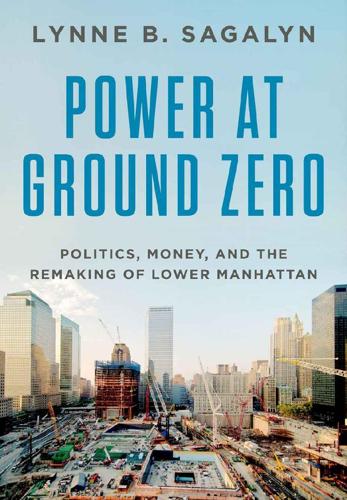
Power at Ground Zero: Politics, Money, and the Remaking of Lower Manhattan
by
Lynne B. Sagalyn
Published 8 Sep 2016
Bloomberg and Silver issued a joint statement on the “WTC Site Development Talks,” ratcheting up their campaign against the Port Authority and its persistent principled refusal to move off its position of financing only one tower at Ground Zero. On this one issue—pressuring the PA to deliver the financial package for Silverstein’s towers—their interests were aligned. For anyone with a recall of the mayor’s policy preferences—for an Olympics-oriented football stadium on the West Side (2005), congestion pricing (2008), retaining mayoral control of schools (2009)—this alliance of former adversaries undoubtedly seemed unlikely, if not startling. The Assembly leader’s support was especially valuable insofar as he could apply pressure to influence outcomes on other projects or initiatives for which the mayor or governor needed his support in Albany.

USA Travel Guide
by
Lonely, Planet
Reelected for a second term in November 2005, Bloomberg won a third term in 2009 after the passage of a highly controversial amendment that allowed him to run. Bloomberg is known as an independent political pragmatist, and his administration has earned both raves and criticism for its dual pursuit of environmental and development goals (the citywide nonsmoking law has proved popular, while congestion pricing to combat gridlock failed to get approval). ICONIC NYC Recognizing that any New York City highlights list is inevitably abbreviated, necessary shorthand for a city with so much to do and see, the following offers a few sights not to miss on a short visit: » Museums – The massive and exceptional Metropolitan Museum of Art (Click here) can occupy your entire visit.